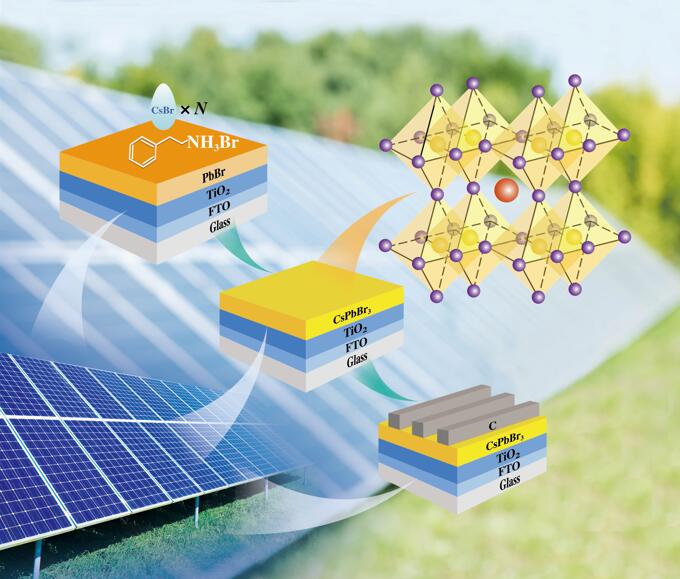SPECIAL TOPIC—Micro-nano photoelectron and laser
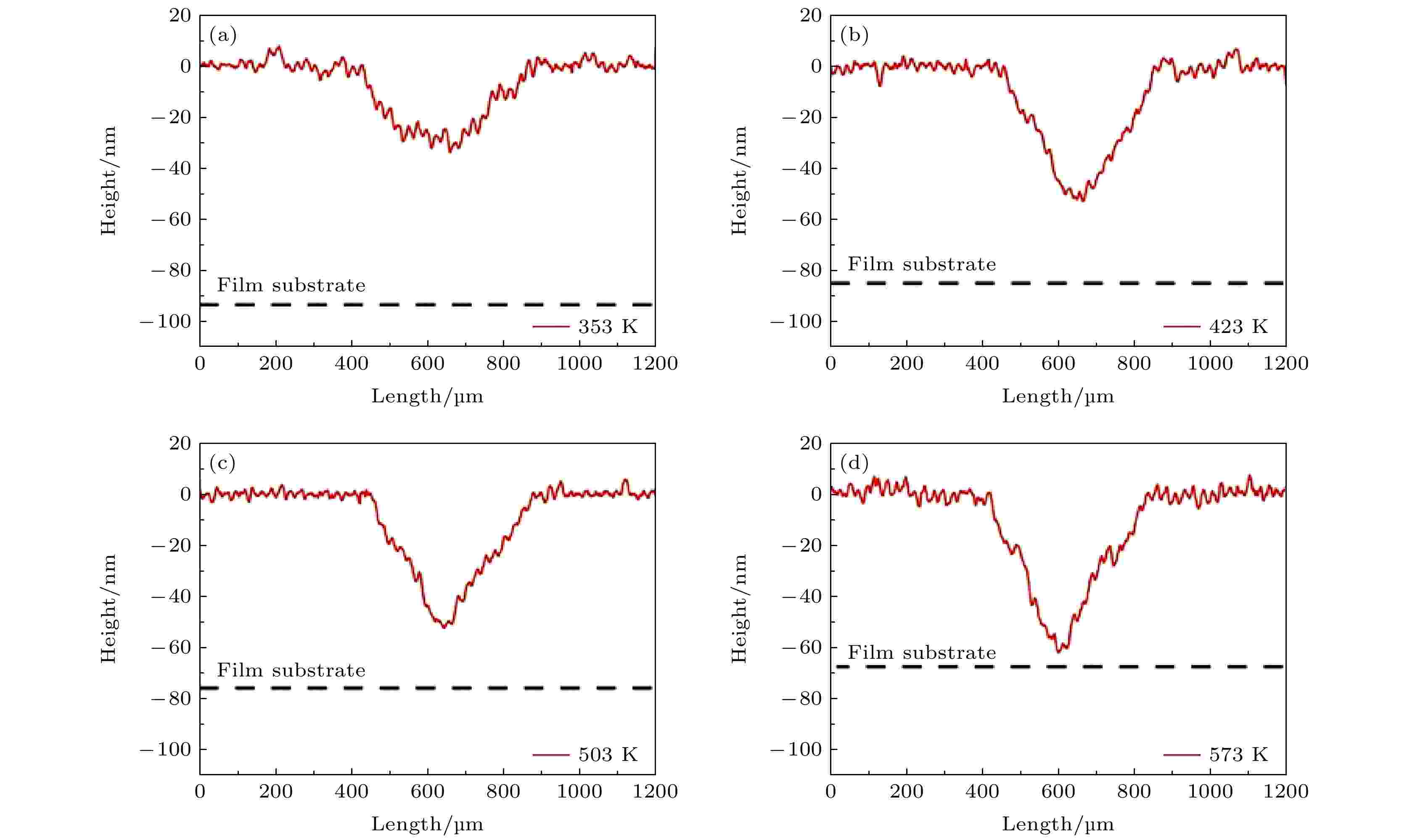
2022, 71 (2): 024206.
doi: 10.7498/aps.71.20212442
Abstract +
As the basic hardware to promote the development of various fields, fiber laser has great development potential in rail transit, optical communication, new material manufacturing, power battery processing, military defense, medical treatment, and other fields. As the core device of passively mode-locked fiber laser, a high damage threshold saturable absorber plays a decisive role in achieving high power, ultrashort pulse duration, and high energy laser output for a fiber laser. For saturable absorbers of traditional materials and structures, the spot size of light acting on the material is almost the same as the exit diameter of the optical fiber, which is easy to exceed the damage threshold of the saturable absorber and lead to damage. To improve the damage threshold of saturable absorbers, the structure of saturable absorbers based on both real materials and traditional saturable absorbers can be optimized. On the one hand, the preparation technology of the saturable absorber is adjusted, such as using the sol-gel method, which has a good effect on improving the damage threshold of the saturable absorber. Moreover, different materials are selected and used as substrates, such as the use of inorganic materials as material substrates and the selection of a variety of insertion cavity structures, such as “sandwich” transmission structures, tapered fibers, and photonic crystal fibers. These methods are of great significance in improving the damage threshold of the real material saturable absorber and realizing pulsed laser with excellent performance and high stability. On the other hand, the equivalent saturable absorber structure is used to improve the damage threshold and optimize the laser performance, such as hybrid mode-locked structure and nonlinear multimode interference. The continuous optimization of the fiber laser damage threshold will further expand its application range. Therefore, it is important to adjust the preparation process and insert the cavity structure of saturable absorbers for improving the damage threshold of the saturable absorber and achieving high performance and stability of the pulsed laser. This paper reviews the research status of high damage threshold saturable absorbers at home and abroad, summarizes the latest methods to improve material damage threshold and the latest research progress of equivalent saturable absorbers, and also points out the future development direction of high damage threshold saturable absorbers.
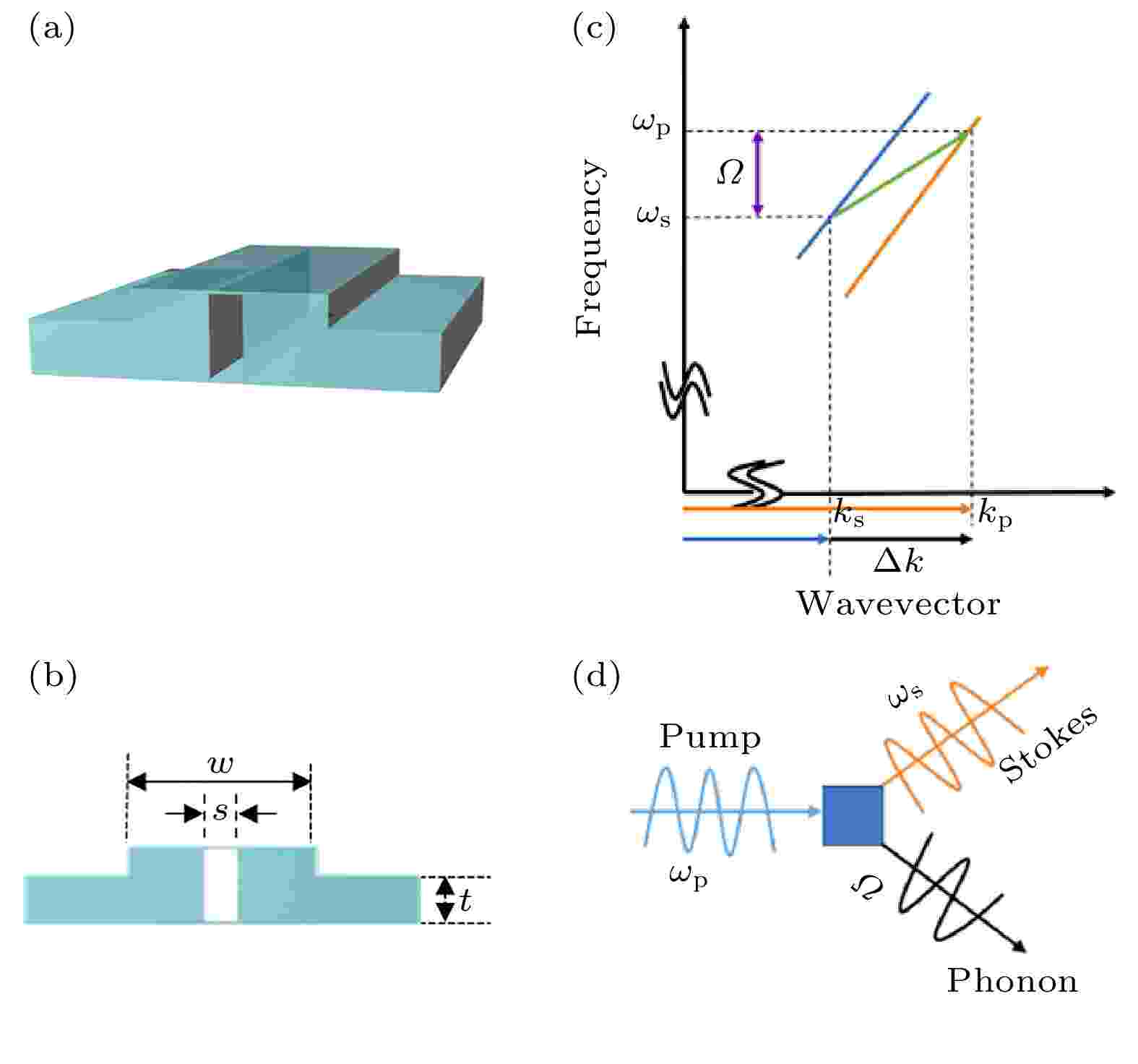
2022, 71 (2): 024203.
doi: 10.7498/aps.71.20211539
Abstract +
As is well known, the on-chip waveguide with high Brillouin gain has many applications in the field of photonics. Brillouin lasers on silicon substrates are widely used in frequency tunable laser emission, mode-locked pulsed lasers, low-noise oscillators and optical gyroscopes. However, in a silicon-based Brillouin laser, a long waveguide length is still used to achieve Brillouin laser output, which is not conducive to on-chip integration. In this work is proposed a new type of waveguide structure consisting of chalcogenide As2S3 rectangles and an air slit. Owing to the existence of the air gap, the radiation pressure makes the enhancement of Brillouin nonlinearity much higher than the enhancement caused only by the material nonlinearity. This makes the Brillouin gain reach 1.78 × 105 W–1·m–1, which is nearly 10 times larger than the previously reported backward SBS gain of 2.88 × 104 W–1·m–1, resulting in phonon frequency tuning in a 4.2–7.0 GHz range. This method provides a new idea for designing nano-scaled optical waveguides for forward stimulated Brillouin scattering, and at the same time, this enhanced broadband coherent phonon emission paves the way for improving the hybrid on-chip CMOS signal processing technology.
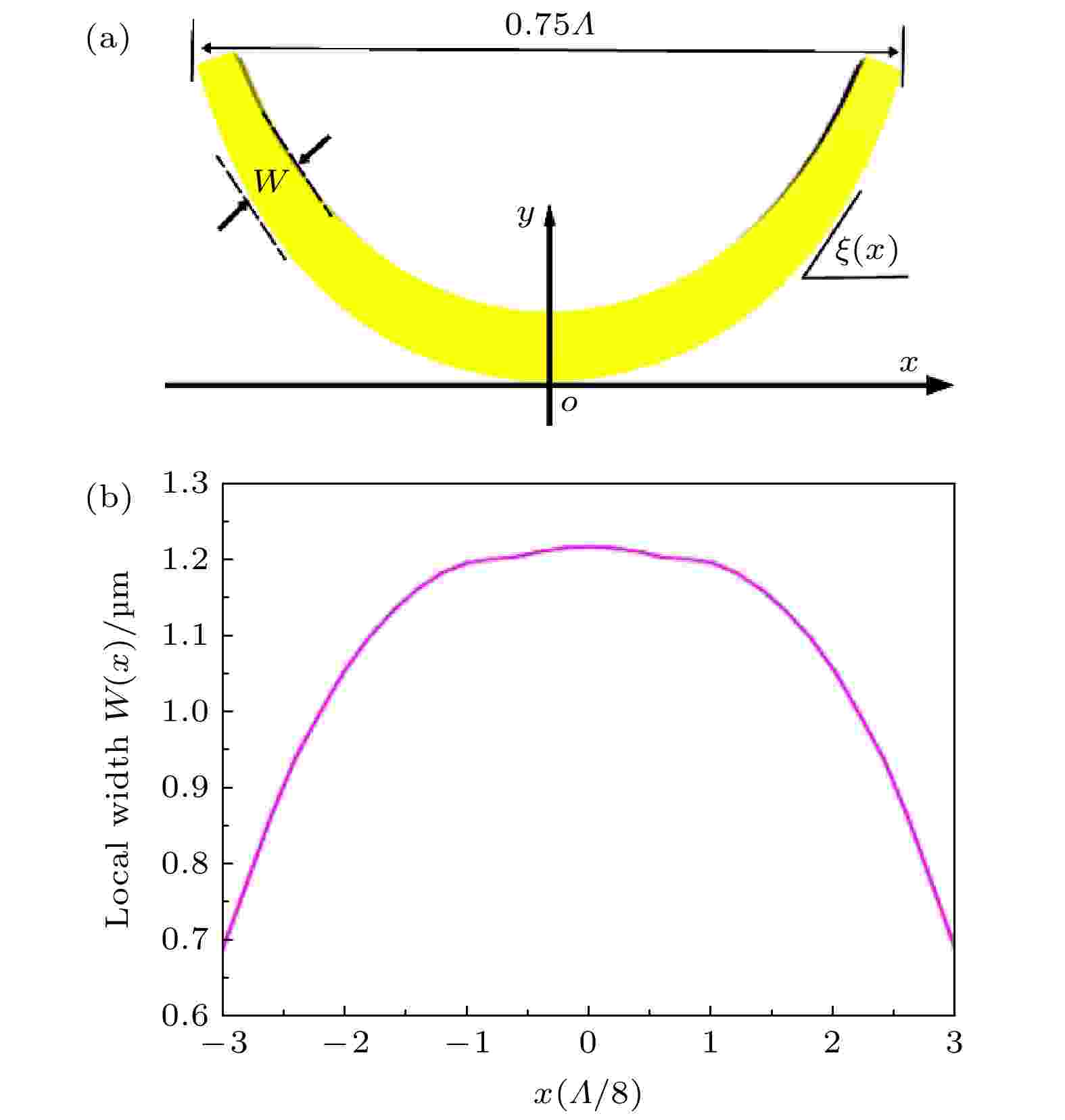
2022, 71 (2): 029101.
doi: 10.7498/aps.71.20211538
Abstract +
Aiming at the characteristics of passive and discrete phase regulations inherent in current metasurfaces, we combine optimized isowidth catenary with non-volatile phase change dielectrics and explore a type of bistable phase-change-based wavefront meta-switch of continuous phase tuning and active switching. First, the switchable wavefront deflector is demonstrated in the mid-IR range between 9 µm and 10 µm. Upon phase transition between crystalline state and amorphous state, the incident wave can be switched into anomalous reflection and regular reflection, i.e. the “on” state and “off ” state of wave deflection. Further, a type of dynamically tunable Bessel beam switch is demonstrated. In the amorphous state, the polarization conversion efficiency approaches to 100% with an incident wave of 9.6 µm in wavelength. Therefore, the normal geometrical phase and the second-order Bessel focus are switched “on”. However, the cross-polarization and geometrical phase are switched “off ” upon phase changing into crystallized state. Intrinsically, non-dispersive spin-orbit interaction ensures that this kind of device possesses the broadband characteristics. Such a devise has great potential applications in active optoelectronic integration, optical communications, etc.
SPECIAL TOPIC—Nano engineering and thermophysics
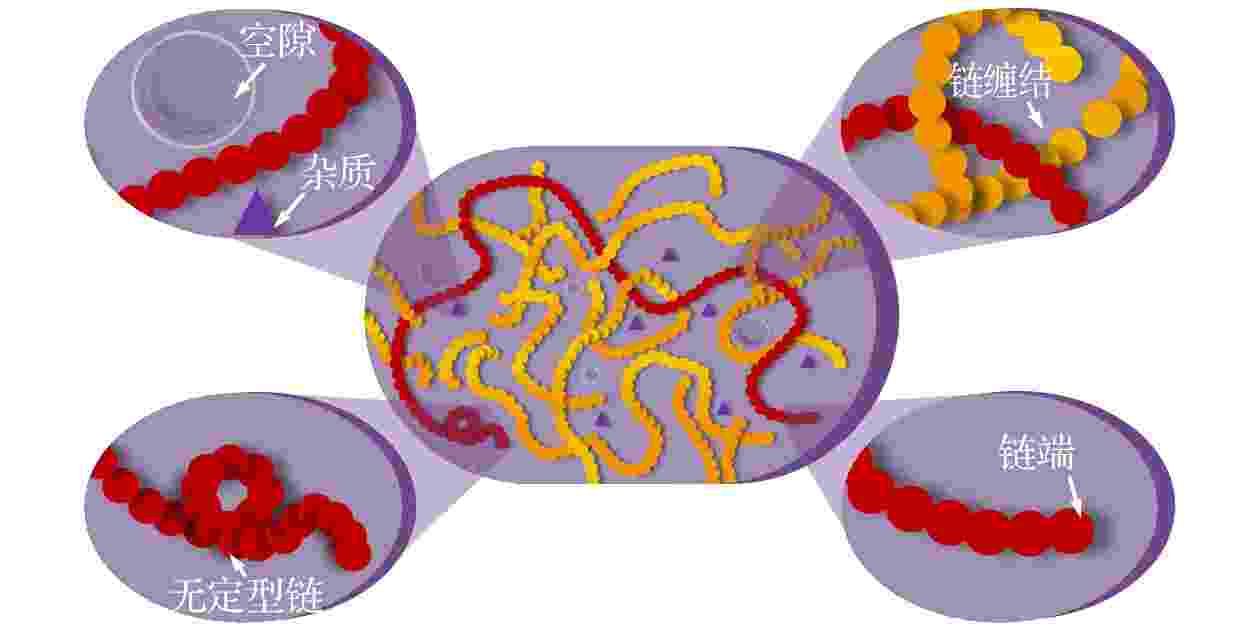
EDITOR'S SUGGESTION
2022, 71 (2): 023601.
doi: 10.7498/aps.71.20211876
Abstract +

EDITOR'S SUGGESTION
2022, 71 (2): 024401.
doi: 10.7498/aps.71.20211854
Abstract +
As a new type of cooling technology, radiative cooling achieves temperature reduction through spectral regulation. Compared with the traditional active cooling technologies such as absorption-based cooling and compression-based cooling, the radiative cooling offers unique advantages, which are of great significance in environmental protection and energy utilization. First of all, the basic principle of radiative cooling and the radiative cooling within the natural biological systems are introduced in this review. The biological systems achieve their regulations of radiative cooling through controlling the materials, microstructures and behaviors in the systems, which also provide inspiration for us to explore new radiative cooling materials and devices. We also summarize the various mechanisms of radiative cooling in the biological systems and the optimization of such cooling structures. The recent research progress of bio-inspired radiative cooling is also presented. At the end, the outlook of the research directions, potential applications, and the material fabrication approaches for bio-inspired radiative cooling are discussed. The radiative cooling materials and devices with high power output and intelligent control should be an important development direction of bio-inspired radiative cooling in the future. With the integration of advanced micro/nano fabrication technology, bio-inspired radiative cooling will have a broader market and much room of applications in the future.
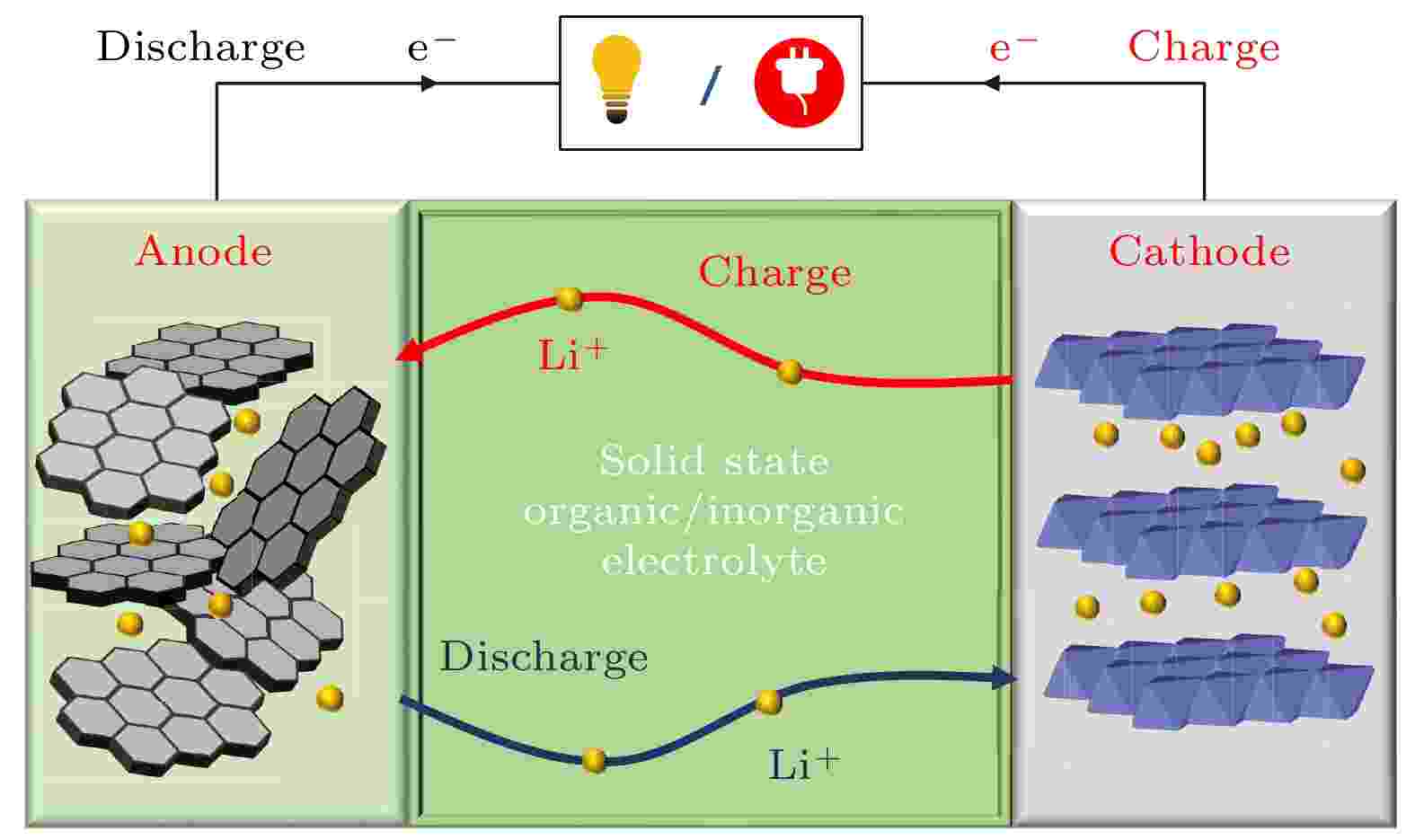
2022, 71 (2): 026501.
doi: 10.7498/aps.71.20211887
Abstract +
This paper briefly describes the characteristics of all-solid-state lithium-ion battery and the significance of investigation on the internal thermal transport. The related experimental and theoretical works on the thermal transport properties of cathode materials, anode materials, solid-state electrolytes, and electrode-electrolyte interfaces are introduced and summarized. In view of the unclear mechanism of the influence of lithium insertion and extraction process on the thermal conductivity of electrode materials, the challenge of solid-state amorphization to the research of thermal transport, and the limitation of models and methods in heat transport across the interface, we systematically sort out the important scientific issues of thermal transport in all-solid-state lithium-ion battery.
GENERAL
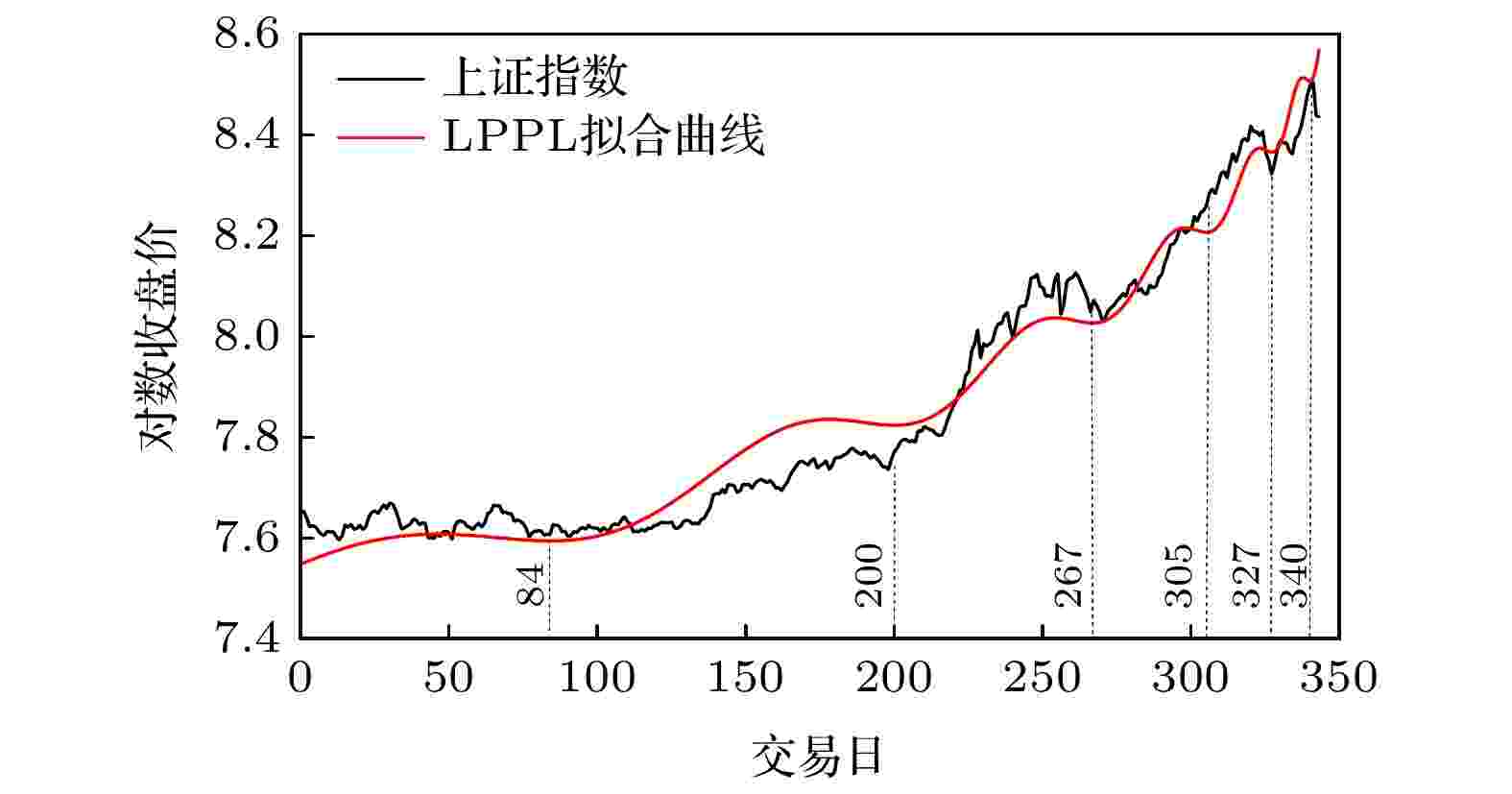
2022, 71 (2): 020201.
doi: 10.7498/aps.71.20201940
Abstract +
This paper is based on the famous log-periodic power law model (LPPL) in financial physics to warn of the collapse of China's Shanghai Composite Index and GEM Index in June 2015. In view of the existing research using the LPPL model to warn of market crash, only the historical trading data of the market are considered. For the first time, investor sentiment factors are incorporated into the modeling process of LPPL model to improve the early warning effect of LPPL model. Using the text mining technology combined with semantic analysis methods to grasp the financial media's stock evaluation report for word frequency statistics, in order to build the medium sentiment index. The further modified expression of the crash probability function in the LPPL model is represented as a function of historical trading data and medium sentiment, and thus constructing an LPPL-MS combination model to warn of stock market crash. The empirical results show that the LPPL-MS combination model constructed in this paper has higher warning accuracy than the LPL model, and its prediction crash time is closer to the actual crash time of the Shanghai Index and GEM Index, and its fitting results have passed the relevant test.

EDITOR'S SUGGESTION
2022, 71 (2): 020301.
doi: 10.7498/aps.71.20210881
Abstract +
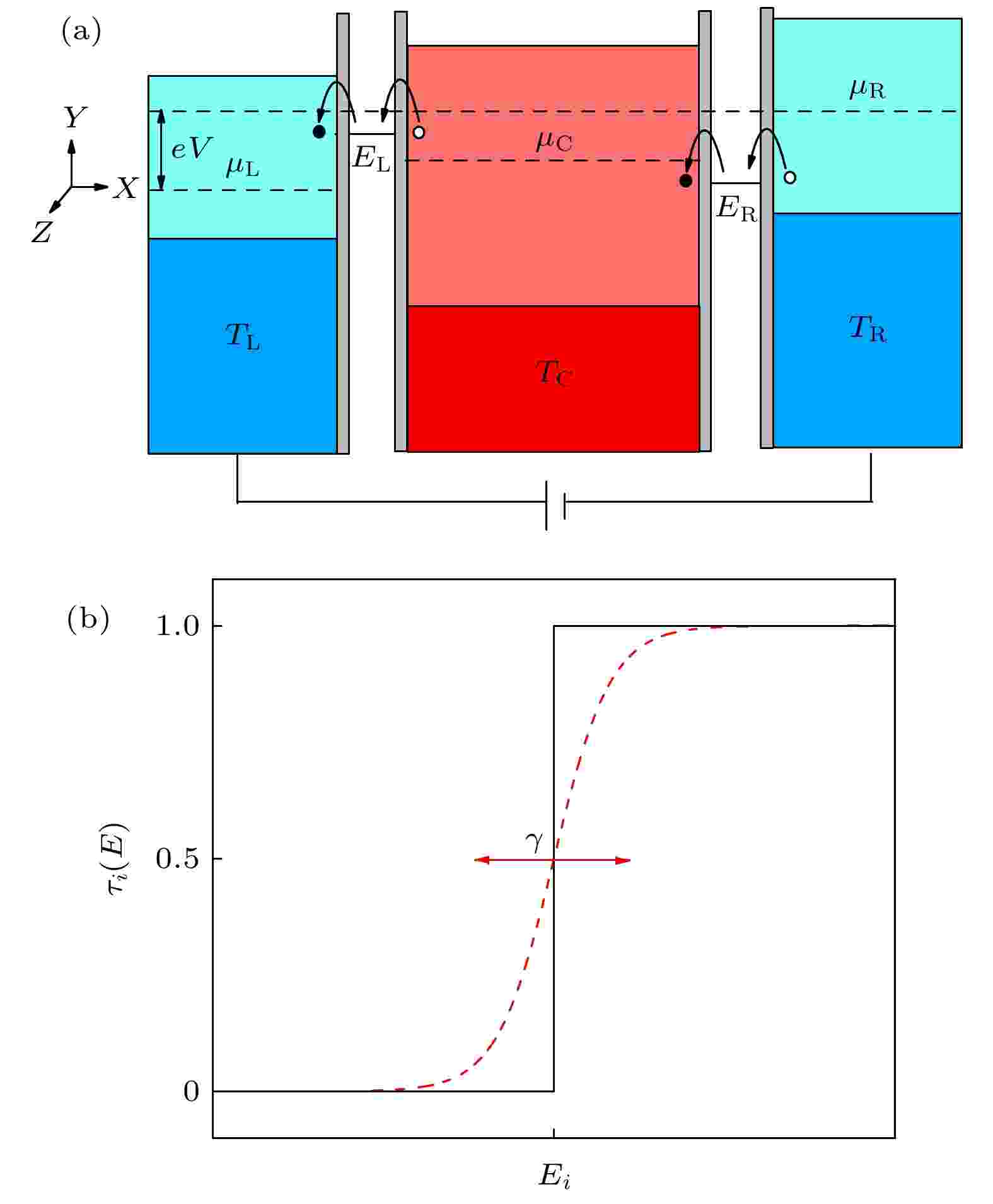
2022, 71 (2): 020501.
doi: 10.7498/aps.71.20211077
Abstract +
In this paper, the model of a three-terminal nanowire refrigerator is established based on one-dimensional (1D) ballistic conductor. It is composed of an intermediate cavity and left/right electron reservoir in which the intermediate cavity and left/right electron reservoir are connected by 1D nanowire conductor. The expression for the charge current and that for the energy current flowing from two electron reservoirs are derived by using Landauer formula and basic thermodynamic laws. Then, the working region of the refrigerator is obtained, its performance characteristics are analyzed, and its performance optimization is discussed. It is shown that the refrigerator under different parameters operates in different working regions. For each refrigeration region, there is an upper limit of temperature difference, and the refrigerator will be unable to refrigerate beyond the upper limit. The characteristic curve of the cooling rate changing with performance coefficient is a loop-shaped one, which provides an important index for us to evaluate the performance of the refrigerator. The energy level width of the nanowire can be reduced as much as possible, which will improve the performance of the refrigerator.

2022, 71 (2): 020701.
doi: 10.7498/aps.71.20211376
Abstract +
The organic-inorganic hybrid colorimetric humidity sensor which can obtain environmental humidity by electrical signals and color changes has broad application prospects in the field of humidity monitoring because of its high feature color discrimination, excellent stability, and simple preparation process. However, its long response-recovery time is generally not conducive to real-time humidity monitoring. In this paper, nanometer silica particles are doped into polyimide(PI)-nickel(II) iodide(NiI2) organic-inorganic hybrid materials to fabricate PI-SiO2/NiI2 composite films and colorimetric humidity sensors. Then their surface morphologies and humidity sensing properties are studied. It is found that PI-SiO2/NiI2 film possesses a honeycomb-like surface morphology, the humidity sensitivity of PI-SiO2/NiI2 colorimetric humidity sensor is better than that of other NiI2 based humidity sensors, its characteristic color is distinct in a range of 11%–97% RH humidity, and the humidity response time of the PI-SiO2/NiI2 colorimetric humidity sensor is less than 1.5 s, and the recovery time is less than 18 s. The research result indicates that the doping of nanometer silica particles can effectively improve response-recovery properties of the organic-inorganic hybrid colorimetric humidity sensor, which is helpful in improving the performance of the sensor.
THE PHYSICS OF ELEMENTARY PARTICLES AND FIELDS

2022, 71 (2): 021401.
doi: 10.7498/aps.71.20211083
Abstract +
Both the information about the scattering of muons due to their interaction with material and the information about the material-stopped muons generating secondary induced neutrons effectively are used for multimodal imaging of muon. In order to evaluate the image quality of multimodal imaging of muon, the detection model is established based on Geant4 and the reliability of the detection model is verified. Both the multiple Coulomb scattering module and the muon induced neutron module prove to be reliable. The multimodal imaging simulation program is developed, and the images are reconstructed on the basis of the simulated data. Four imaging models are developed. The first model is a line pair model used to study the spatial resolution of reconstructed images with imaging time ranging from two hours to two weeks. The line pair model is composed of 235U and the length of each line pair is set to be 100 mm. The cross sections are set to be 42, 42, 62, 62, 102, 102, 202, and 202 mm2, respectively. The second model is a cube model used to study the material resolution of reconstructed images with imaging time ranging from one hour to twelve hours. The side length of each cube is 100 mm. The third model is the cladding model used to test the reliability of multimodal imaging images in complex shielding situations. The outermost layer is of lead, with the side length being 140 mm and the thickness 40 mm. The middle layer is of iron, with the side length being 100 mm and the thickness 40 mm. The innermost layer of 235U, with the side length being 60 mm. The last letter model is used to calculate the structural similarity of reconstructed images, with imaging time ranging from half an hour to twelve hours. The letter model is made of 235U and consists of cubes with side length of 50 mm. The letters “E” and “P” are made up of 16 cubes and 15 cubes respectively. The spatial resolution reaches 4 mm when imaging time is within 12 hours. The 235U and other common high-z, medium-z, and low-z material can be distinguished when imaging time is on the order of hours. Muon scattering imaging image of the cladding model will cause misjudgment. However, the multimodal imaging image can correctly reflect the existence of 235U. The structure similarity between the reconstructed image and the reference image in different imaging times proves that multimodal imaging has higher quality than single imaging method. The study indicates that the multimodal imaging of muon has better imaging quality, can adapt to more complex imaging scenes and has more advantages in the detection and recognition of special nuclear material than muon imaging method with single interaction information.
ATOMIC AND MOLECULAR PHYSICS
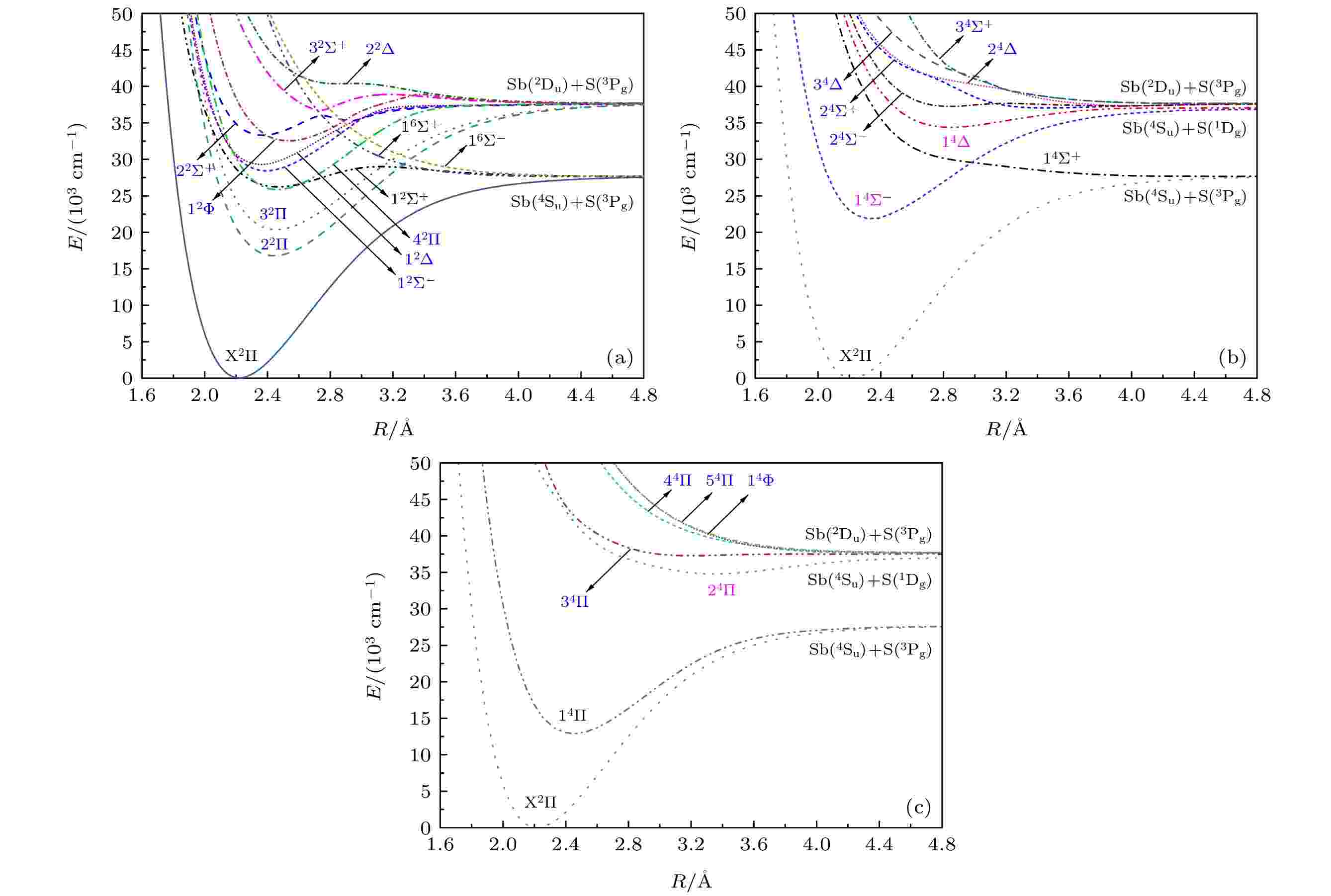
2022, 71 (2): 023101.
doi: 10.7498/aps.71.20211441
Abstract +
In this paper, highly correlated ab initio calculations are performed for accurately determining the electronic structures and spectroscopic features of the Λ-S and Ω low-lying electronic states of SbS . The potential energy curves for 27 Λ-S states of the first three dissociation asymptotes are constructed. Spectroscopic constants and vibrational states for all bound states are well determined. The calculated atomic states for both atoms are consistent with experimental data quite well. Several low-lying Ω electronic states are also investigated, and their respective spectroscopic constants and vibrational states are obtained and compared with those of corresponding Λ-S states, which indicates that the spin-orbit coupling effect gives rise to a minor influence on the electronic states of SbS. To verify our computational accuracy, the additional calculations for the low-lying electronic states of PS, AsS and BiS are also carried out. Our derived results are in reasonable agreement with available experimental data. In addition, vibrational spectra from the excited Ω states to the ground state of SbS are simulated, including bands of X(3/2)→X(1/2), 2(1/2)→X(1/2), 4(1/2)→X(1/2), 5(1/2)→X(1/2) and 6(1/2)→X(1/2). The X(3/2)→X(1/2) band is found in the mid-infrared region, while the others are located in the visible region. The predictive results provided in this paper are expected to serve as a guideline for further researches, such as assisting laboratorial detections and analyzing observed spectrum of SbS.

2022, 71 (2): 023301.
doi: 10.7498/aps.71.20211659
Abstract +
The cyano group is a typical electron-withdrawing group, which has aroused the interest of relevant researchers. Many papers reported the dispersed fluorescence spectra of o-hydroxybenzonitrile, its dimers, and complexes with small molecules, aiming to study the intermolecule hydrogen bond and the vibration features of the electronic ground state. There are also reports on using fluorescence excitation spectra to study excited state vibrations, but no report on the systematical analyzing of the vibration features of excited state spectra. Compared with fluorescence spectroscopy, resonance enhanced multiphoton ionization (REMPI) spectroscopy detects ions to obtain excited state energy level data, which has mass-resolution capability, and eliminates the interference of impurities with different charge-to-mass ratios. The strong electron-withdrawing ability of cyano group results in higher ionization energy for molecules containing cyano groups. Many REMPI experiments on benzonitrile derivatives require two-color lasers. In this paper, two-color resonance enhanced two-photon ionization experiment is performed by using a home-made linear time-of-flight mass spectrometer, and the vibration-resolved REMPI spectrum of o-hydroxybenzonitrile is obtained for the first time. Combining the high-precision density functional theory calculations with the Franck-Condon spectral simulations, the spectral characteristics are analyzed in detail, and a large number of fundamental, overtone and combined vibrations are found. The spectral assignment is carried out as accurately as possible. Most of the fundamental vibrations located at ring are assigned to the in-plane distortion or swing of the ring, which is related to the expansion of the ring during the molecular excitation. Theoretical and experimental results show that the low-frequency signal of REMPI spectrum is strong, the background is low, the band is less, and the resolution is good. As the vibration frequency increases, the signal changes in the worse direction. This is because the low-frequency spectrum mainly comes from the low-frequency fundamental vibrations and a little contribution from overtones. As the vibration frequency increases, the contributions from overtone and combined vibrations gradually increase, resulting in dense bands and low resolution. Theoretical calculations show that the high-order vibration and combination of multi-mode vibrations usually have a lower Franck-Condon factor, so the signal gradually becomes weak as the frequency increases, and the signal-to-noise ratio becomes worse.
ELECTROMAGNETISM, OPTICS, ACOUSTICS, HEAT TRANSFER, CLASSICAL MECHANICS, AND FLUID DYNAMICS
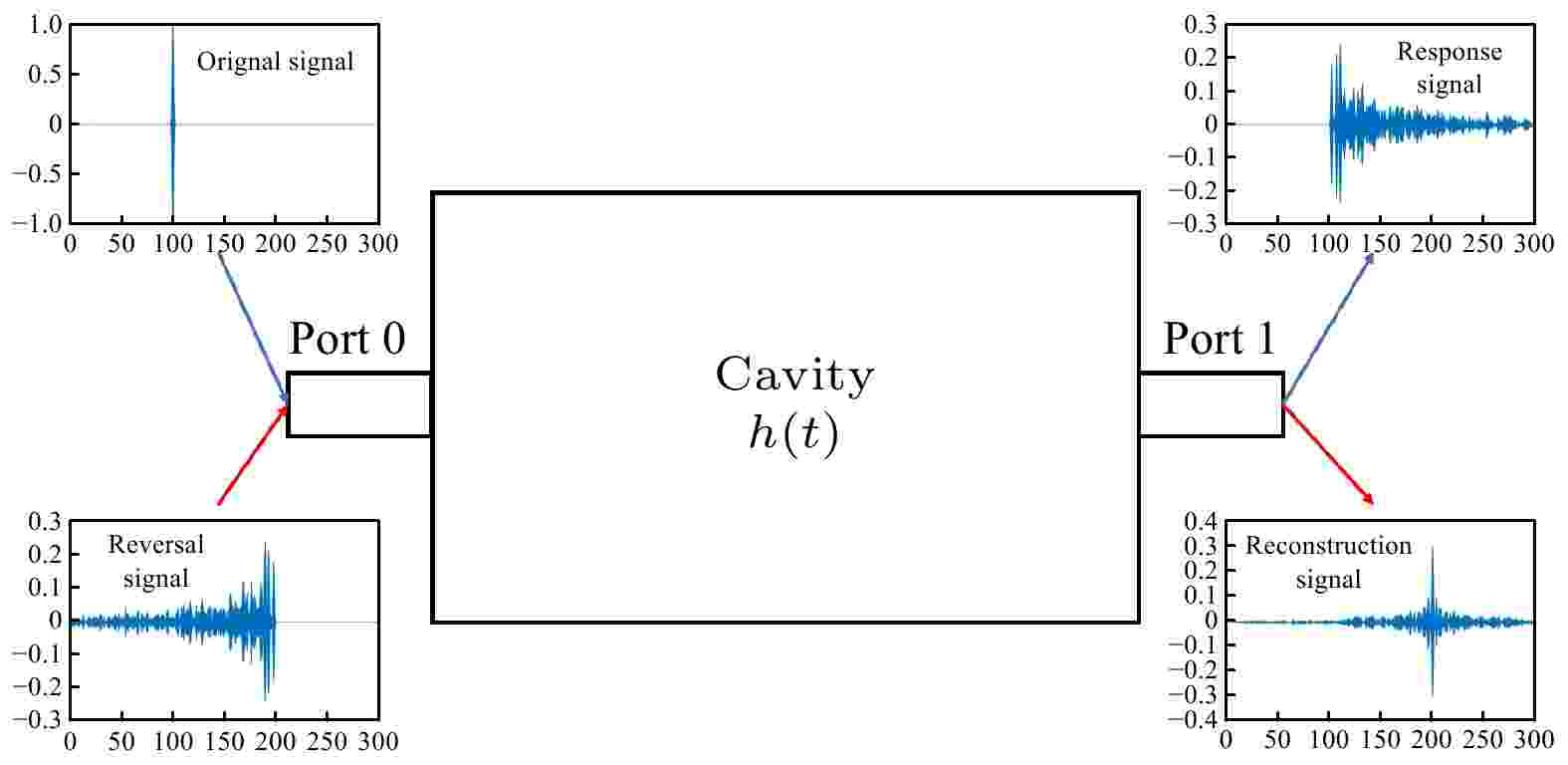
2022, 71 (2): 024101.
doi: 10.7498/aps.71.20210701
Abstract +
The electromagnetic wave time reversal technology using time reversal cavity (TRC) has potential applications in many areas, such as pulse compression, power synthesis, perturbation detection, beamforming, etc. Microwave chaotic cavity with multi-path transmission characteristics is usually used in TRC. Based on diffraction theory, it can prove that this kind of cavity has spatiotemporal focusing characteristics and can be used for compressing pulses, but it cannot be used to analyze the reversal performance of the cavity. In order to obtain a suitable analysis method and guide the design of TRC, in this work, the scattering, diffusion and attenuation characteristics of electromagnetic wave propagation are analyzed and a multipath channel model of TRC is built by the channel theory. Moreover, the crosstalk characteristics between paths are studied, and the generation mechanism of time sidelobe, time sidelobe shift and interference are also investigated. In addition, under the assumption of random plane wave, the distribution characteristics of spatial focal spot are analyzed, which is consistent with the diffraction theory. Moreover, the actual focal spot size is not only limited by the diffraction limit, but also related to the initial focal spot size. The theoretical analysis results are basically consistent with the experimental and numerical simulation results.
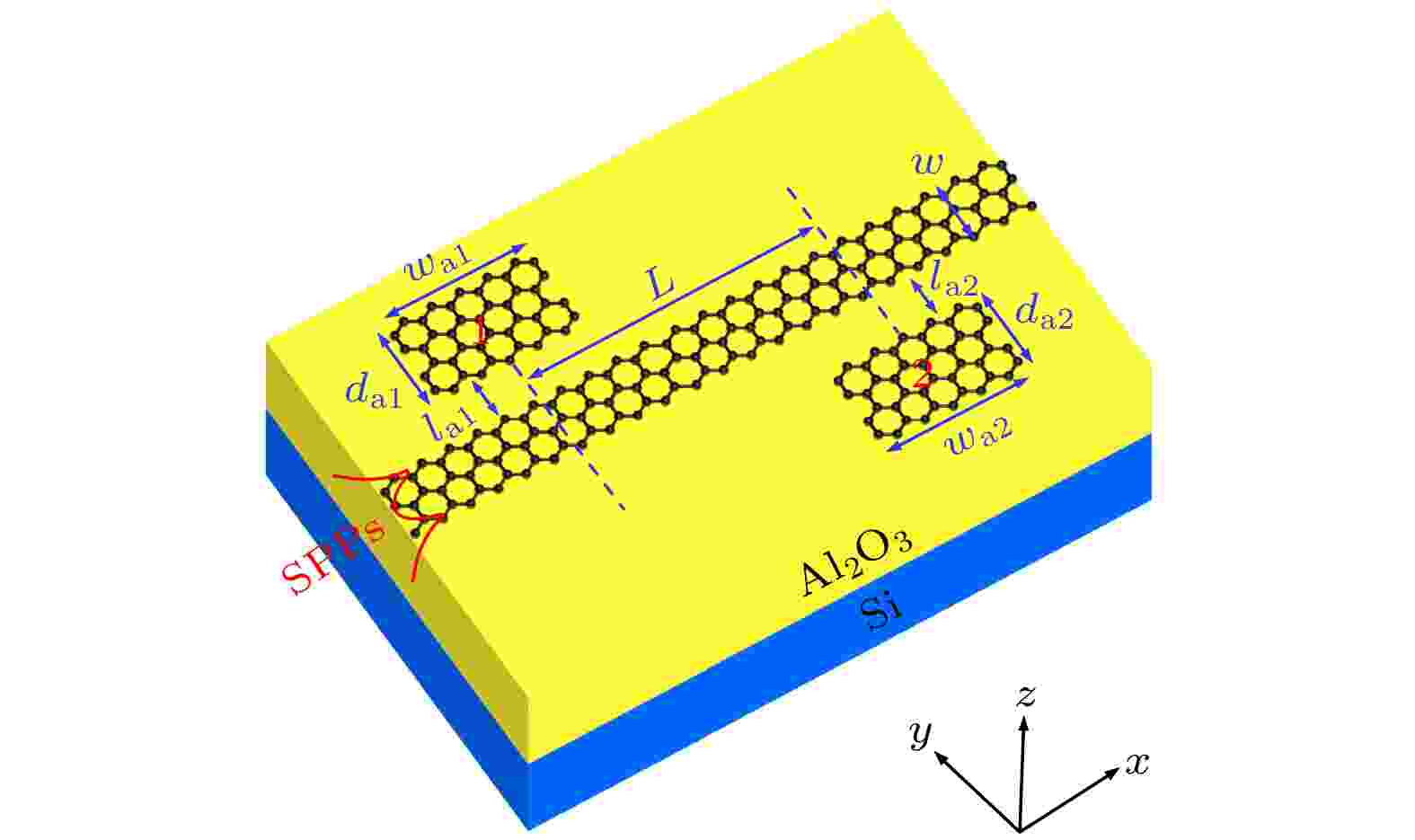
2022, 71 (2): 024201.
doi: 10.7498/aps.71.20211397
Abstract +
In order to reduce the size of the device and realize the ultrafast response time and dynamic tunableness, the single-band and dual-band plasmon induced transparency (PIT) effect are investigated based on graphene nanoribbon waveguide side-coupled rectangle cavity. The slow light properties of the model are analyzed numerically and theoretically by coupled mode theory and finite difference time domain method. With controlling the chemical potential of the graphene rectangle cavity, the tunability of the resonant wavelength and the transmission peak can be achieved simultaneously in single-band and dual-band PIT model. As the chemical potential of graphene increases, the resonant wavelength of each transmission window of PIT effect decreases gradually and presents the blue shift. In addition, through dynamically tuning the resonant wavelength of the graphene rectangle cavity, when the chemical potential of the graphene rectangle cavity increases from 0.41 to 0.44 eV, the group index of single PIT system is controlled to be between 79.2 and 28.3, and the tunable bandwidth is 477 nm. Moreover, the group index of dual PIT system is controlled to be between 143.2 and 108.6 when the chemical potentials of graphene rectangle cavities 1, 2, and 3 are 0.39–0.42 eV, 0.40–0.43 eV, and 0.41–0.44 eV, respectively. The size of the entire PIT structure is <0.5 μm2. The research results here in this work are of reference significance in designing and fabricating the optical sensors, optical filters, slow light and light storage devices with ultrafast, ultracompact and dynamic tunableness.
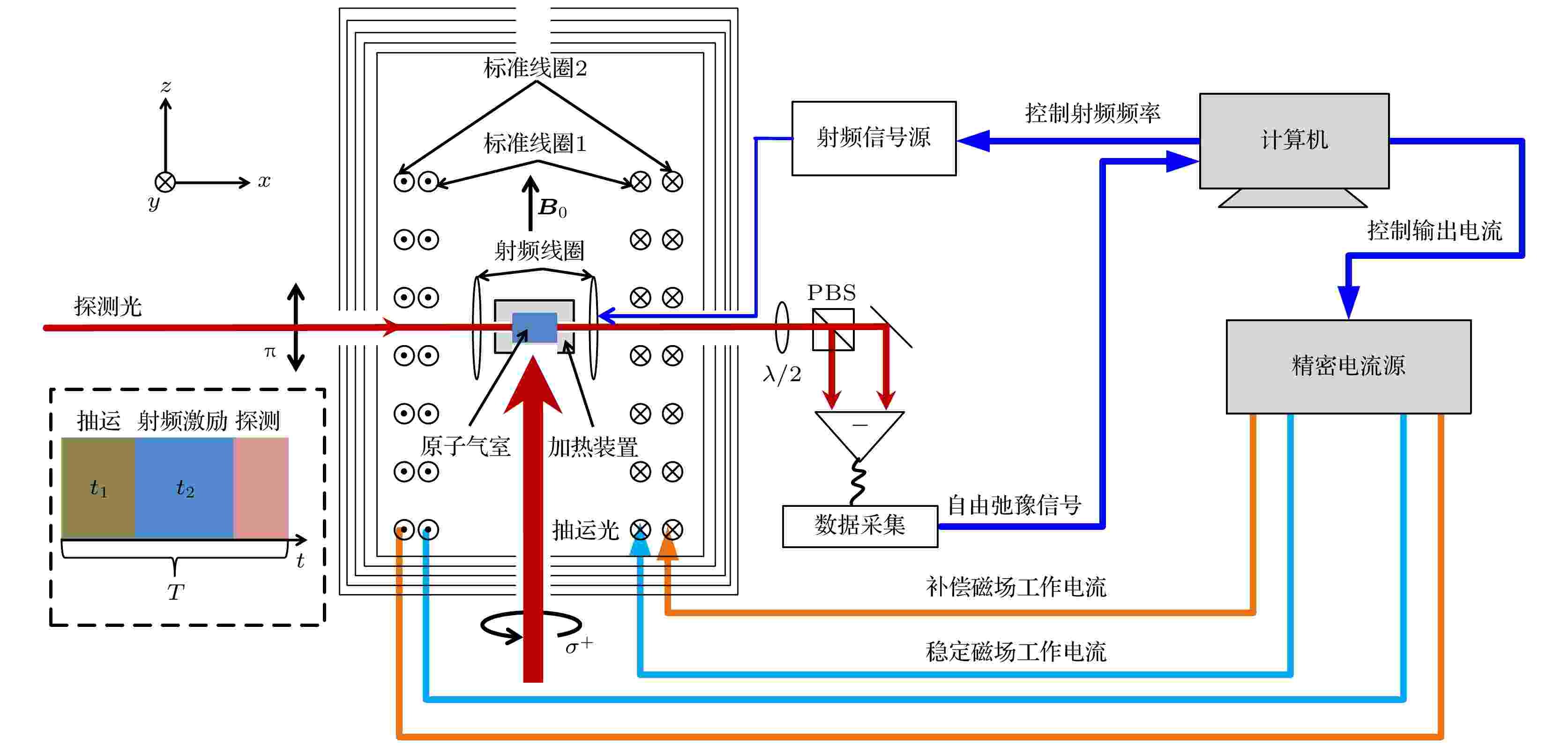
EDITOR'S SUGGESTION
2022, 71 (2): 024202.
doi: 10.7498/aps.71.20211122
Abstract +
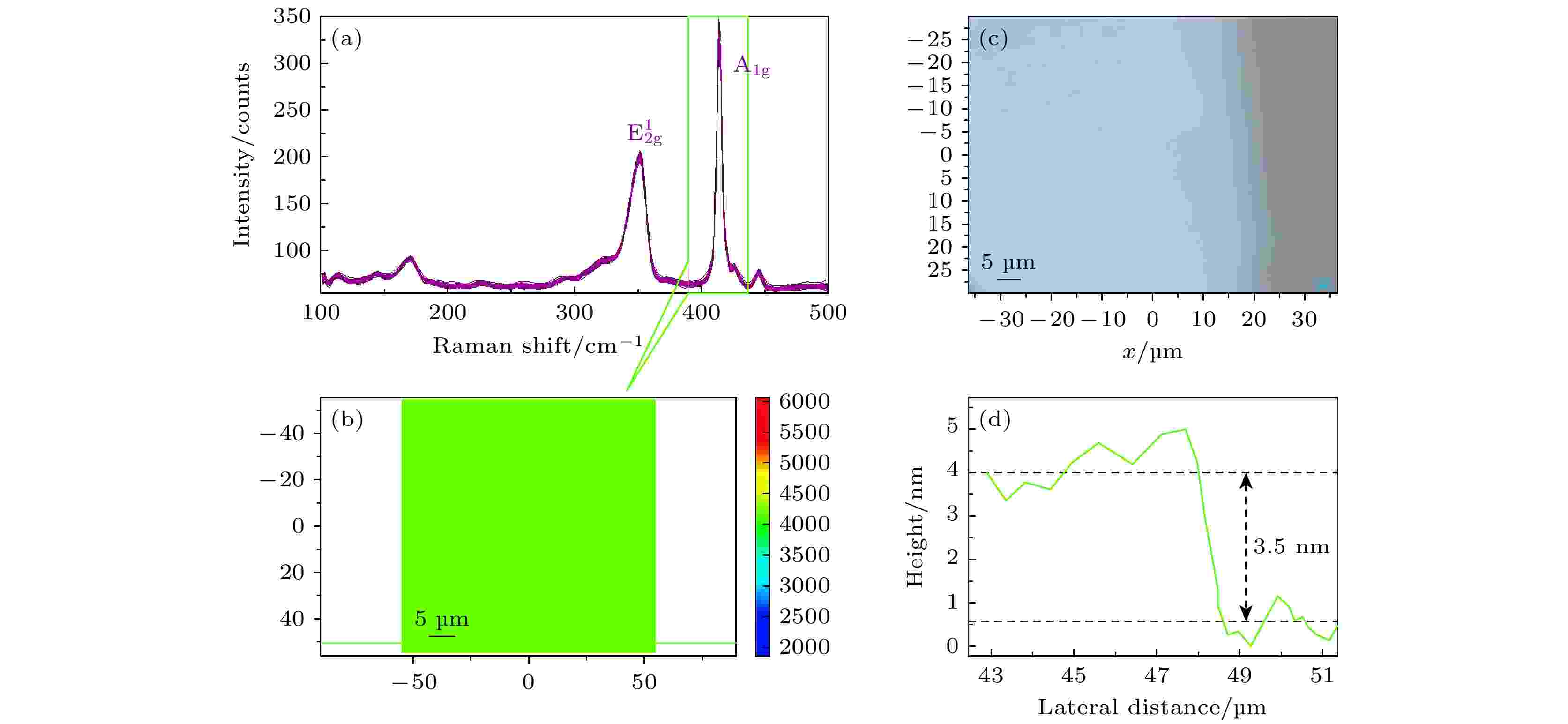
2022, 71 (2): 024204.
doi: 10.7498/aps.71.20211409
Abstract +
Optical parametric oscillator (OPO) is an important mid-infrared coherent light source. Two-dimensional (2D) transition metal dichalcogenide (TMDC) with nonlinear absorption of near-infrared-wavelength light is expected to be a prospective modulating switch for OPO’s fundamental laser. In this work, firstly, the characteristics of a home-made 3.5nm-thick tungsten disulfide (WS2) sample are measured and analyzed. The nonlinear transmission is figured and fitted, revealing the performance of WS2’s saturable absorption. Then, the output characteristics of WS2 saturable absorber (SA) modulated solid-state laser are measured experimentally. Although the photon energy of 1.06 μm-wavelength laser is less than the bandgap energy of 3.5nm WS2, the sample still exhibits the saturable absorption. This may be attributed to the mechanisms of defect-induced absorption, coexistence of states, edge-state of material, two-photon absorption, etc. Secondly, combined with active acousto-optic (AO) modulator, the active and passive Q-switched OPO with idler-light oscillation are implemented, and the nanometer pulse-width mid-infrared pulse is obtained. The implementation of AO modulator is to manage the regular switching time to reduce the pulse peak-to-peak vibration of fundamental light and improve the peak power. The optimal characteristics of WS2 for OPO are studied. Based on the saturable absorption characteristics, the output pulse is compressed by 60%, the peak power is improved by 191%, and the stability of pulse train is improved by 79.62%. Especially, the insertion of WS2 nanosheet could alleviate the “output saturation and drop” phenomenon in singly active-Q-switched OPO. This phenomenon may origin from the uneven refrigeration of KTA. Because the saturable absorption effect of WS2 can significantly reduce the transverse area of Gaussian beam, it can alleviate the temperature gradient distribution of KTA and optimize the output characteristics. Finally, based on the nonlinear transmittance curve measured for WS2, the absorption cross section of ground state and excited state are calculated to be1.732 × 10–17 cm2 and 4.758 × 10–19 cm2, respectively, and the lifetime of excited-state energy level and the initial population density of ground state are evaluated to be 400.6 μs and 1.741 × 1022 cm–3, respectively, by considering the inhomogeneous-broadening mechanism and unsaturated absorption under large signal. The rate equations of layered-WS2 modulated optical parametric oscillator are solved. This study shows the optimization effect of 2D TMDC on nonlinear conversion of laser, especially the mitigation of thermal effect. At the same time, it provides a parameter basis for the dynamic simulation of two-dimensional material modulated laser.

2022, 71 (2): 024205.
doi: 10.7498/aps.71.20210974
Abstract +
The capacity of a traditional optical communication system based on single-mode fiber has approached to its theoretical limit. Multi-core few-mode fibers provide an effective way to break through the bottleneck of existing transmission capacity. In this paper, a 5-LP-mode weakly-coupled low-crosstalk 7-core fiber is designed by using a combination of trench assistance and air hole isolation structure. The fiber with a standard outer diameter achieves low crosstalk between cores and modes. The inter-core crosstalk area and the effective mode area of the core are calculated by the finite element method. After design optimization, there are 5 stable transmission LP modes in the C+L band of optical communication in this fiber. The effective refractive index difference between LP21 mode and LP02 mode is the smallest and is greater than 1.1 × 10–3. The LP31 mode in the optical fiber has the largest inter-core crosstalk and the loss is lower than –50 dB/km. The fiber can achieve low crosstalk transmission between modes and cores at the same time. The mode areas of the 5 LP modes in the 7 cores are larger than 86 μm2, and the relative core multiplexing factor is 57.63 at a wavelength of 1550 nm. Therefore, this fiber can be used in a large-capacity high-speed fiber transmission system.
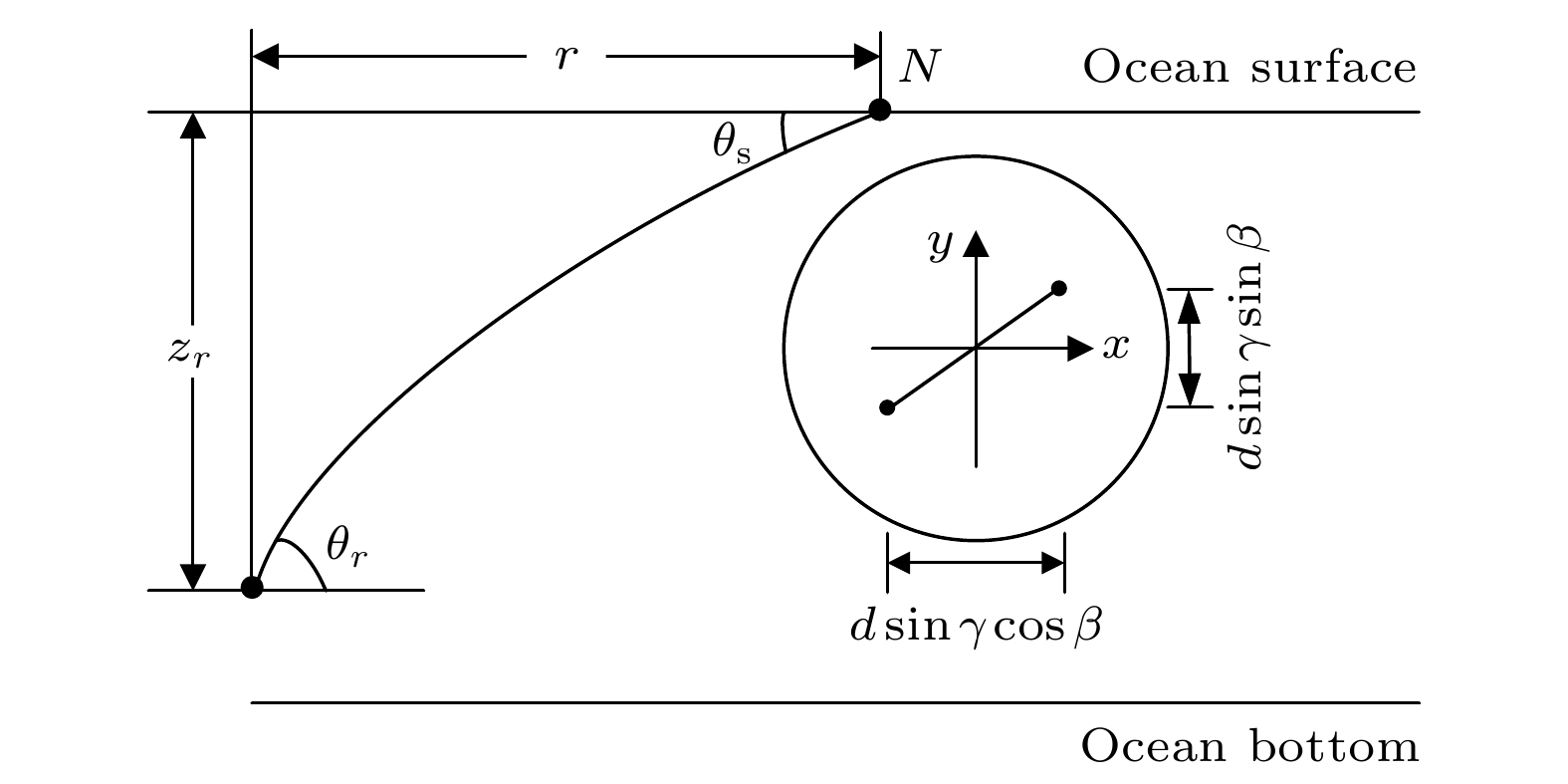
2022, 71 (2): 024301.
doi: 10.7498/aps.71.20211518
Abstract +
The signal-to-noise ratio gain of the array is closely related to the spatial characteristics of the noise field. The modeling of the spatial characteristics of marine environmental noise is always a hot spot. For sonar with different functions, the working frequency band and bandwidth are usually different. Therefore, the spatial correlation coefficient of the noise field in arbitrary frequency band has important reference value for designing sonar systems. According to the process of generating the marine environmental noise field under the high frequency approximation condition, a noise field time-domain modeling method is proposed, and the integral expression of the time-domain sound pressure and particle vibration velocity of marine environmental noise in a horizontally layered medium is given. This lays the foundation for establishing a broadband model of the noise vector field. In particular, the analytical expression of the spatial correlation coefficient of the broadband white noise vector field in the vertical direction under specific condition is also given. Following the spectral structure of wind-generated noise, the spatial correlation coefficients of noise fields with different frequency bands and different spectral slopes are numerically calculated, revealing the influence of bandwidth and spectral structure on the spatial characteristics of marine environmental noise, and the principle behind the result is explained through theoretical derivation. With the increase of the array element spacing and bandwidth, the number of oscillation periods and the oscillation amplitude of the spatial correlation coefficient of each component of the noise vector field gradually decrease, which is caused by the frequency domain average of the noise field correlation coefficient. When the spectral slope is less than zero, the low-frequency noise plays a major role, causing the spatial correlation radius of the broadband noise field to be larger than that of the narrowband noise field. The result of the experiment conducted in South China Sea shows that the measured vertical spatial correlation coefficient of the sound pressure field of marine environmental noise is in good agreement with the theoretical result. The model has potential application prospects for the research of transducer array technology and the inversion of environmental parameters.
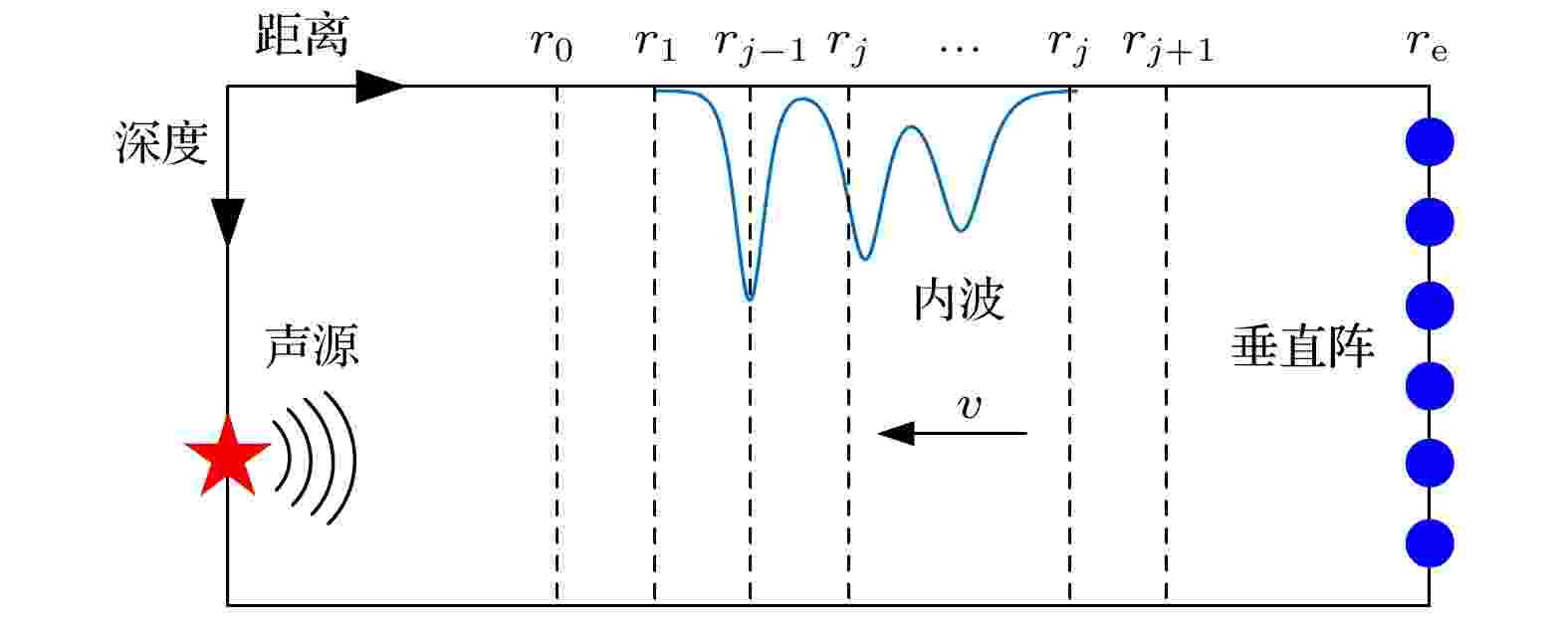
2022, 71 (2): 024302.
doi: 10.7498/aps.71.20211132
Abstract +
Internal solitary wave (ISW) is a kind of nonlinear internal wave commonly observed in the shallow water, which has the characteristics of large amplitude, short period and strong current velocity. With the distribution of the temperature and the salinity in the water column perturbed by ISWs, the sound speed profile becomes range-dependent, and thus affecting the characteristics of the underwater acoustic propagation. The ISWs usually propagate at a speed of the order of 1 m/s , and moving internal waves cause the energy in each acoustic mode to fluctuate dramatically. In this paper, the modal intensity is defined as the squared modulus of the modal coefficient, and is used to measure the sound energy in each mode. Based on the coupled mode theory, the expression of the acoustic modal intensity during the propagation of internal waves is derived in this paper, and the modal intensity is taken as the linear superposition of the oscillating term and the trend term. Most of previous researches were limited to the study of the time-varying characteristics of the acoustic modal intensity during the propagation of internal waves in the time domain or frequency domain. In this paper, the mechanism of modal intensity fluctuations is studied simultaneously in the time domain and the frequency domain with the aid of the short-time Fourier transform. Both the theoretical derivation and the numerical simulation show that the internal solitary wave gives rise to the energy transfer among acoustic modes, i.e., the mode coupling. The dynamic propagation of internal waves further leads to the modal interference, which behaves as an oscillating term in the modal intensity, and causes the modal intensity to fluctuate rapidly with time. The amplitude of the trend term changes with time due to the mode stripping (the difference in attenuation coefficients between different modes), which in turn adds a time-varying offset to the oscillations induced by the modal interference. The trend of the modal intensity and the time-varying characteristics of the amplitude of each frequency component in the oscillating term are closely associated with the modal attenuation. Meanwhile, the depth-integrated intensity is chosen as the measure of the total received acoustic intensity, and the influences of modal intensity fluctuations on the acoustic energy at the receivers during the propagation of internal waves are studied. It is demonstrated that the modal intensity with high energy which oscillates most dramatically will dominate the temporal variation of the received acoustic energy.
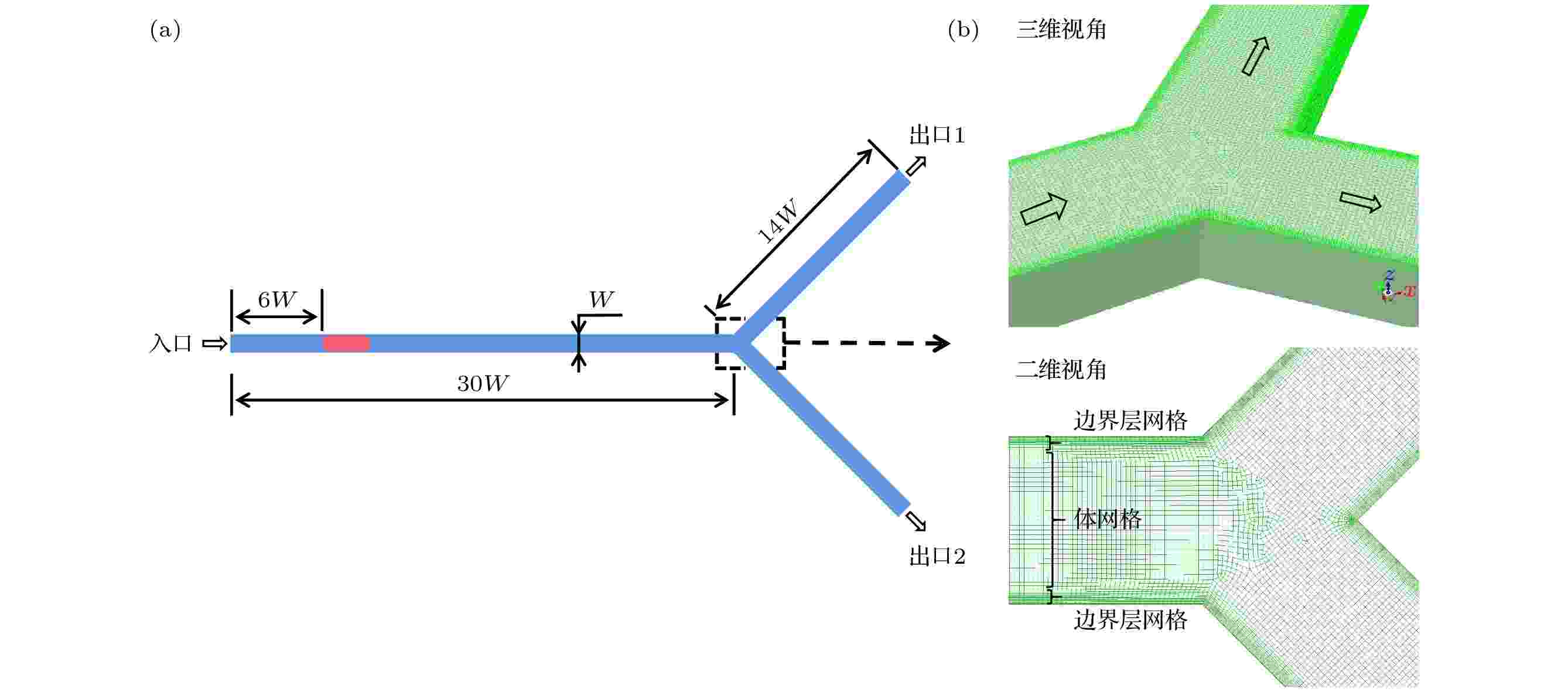
2022, 71 (2): 024701.
doi: 10.7498/aps.71.20210832
Abstract +
Microfluidic technology based on microchannel two-phase flow has been widely used. The precise control of the bubble or droplet size in the channel plays a crucial role in designing the microfluidic systems. In this work, the bubble breakup behavior in Y-shaped microchannel is reconstructed based on the volume of fluid method (VOF), and the effects of bubble dimensionless size (1.2–2.7), outlet flow ratio (1–4) and main channel Reynolds number (100–600) on the bubble breakup behavior are systematically investigated. The bubble asymmetric breakup process is found to be divided into three stages: extension stage, squeeze stage, and rapid pinch-off stage. In the case of small initial bubble size or relatively high outlet flow rate, the bubble does not break, but only experiences the extension stage and the squeezing stage. Four flow patterns of bubble breakup are further revealed for the bubbles with different sizes and outlet flow ratios: tunnel-tunnel breakup, obstruction-obstruction breakup, tunnel-obstruction breakup, and non-breakup. With the increase of outlet flow ratio, the breakup process of the bubble gradually becomes asymmetrical, and the flow pattern shifts along the tunnel-tunnel breakup and the obstruction-obstruction breakup, gradually turns toward the tunnel-obstruction breakup and non-breakup. On this basis, the critical flow ratio of bubble breakup and the variation of daughter bubble volume ratio with outlet flow ratio are obtained for different Reynolds numbers and initial bubble sizes, and the corresponding criterion correlation equation is refined, which can provide theoretical guidance for accurately regulating the daughter bubble size after breakup.
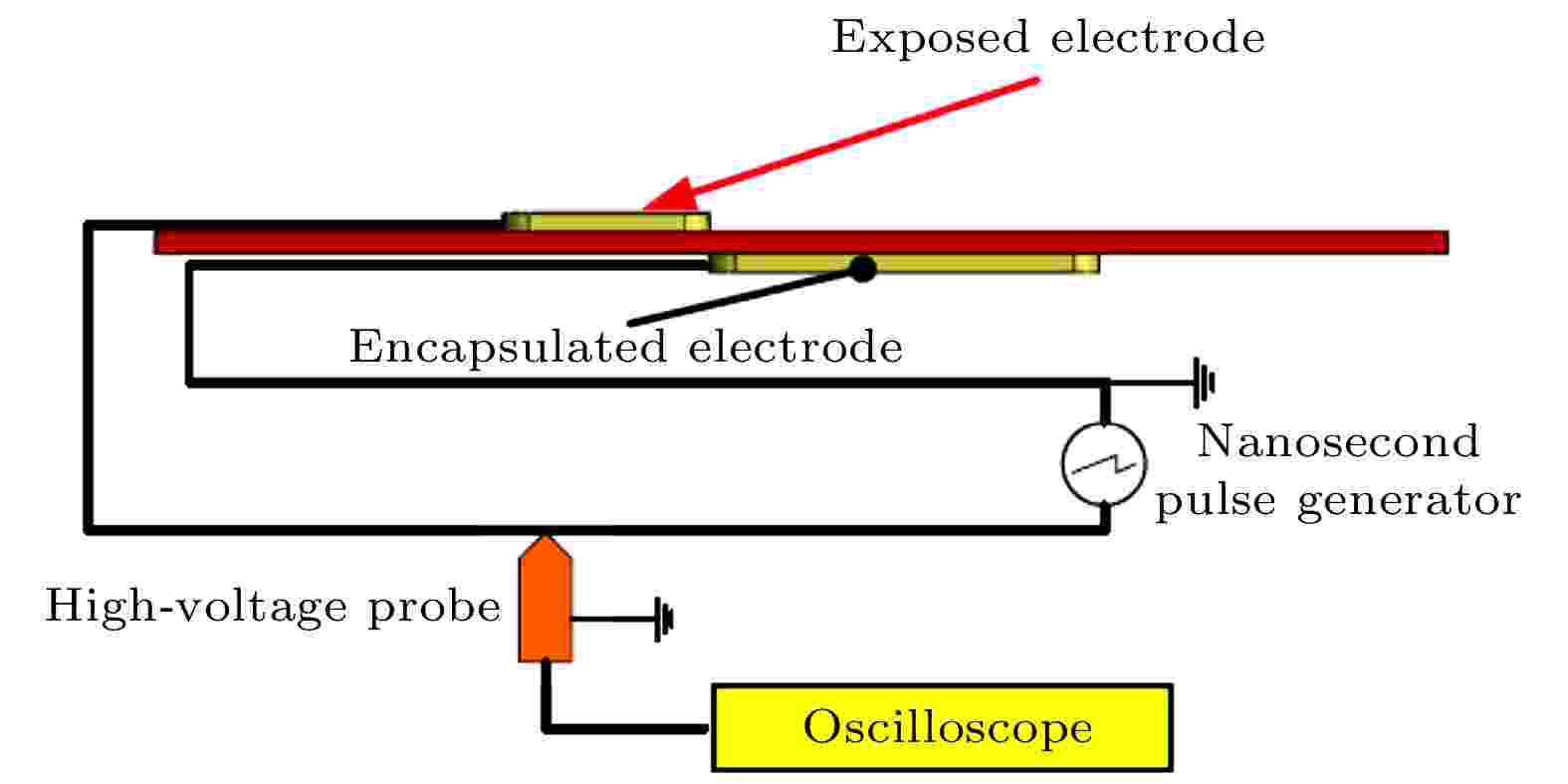
Experiment on longitudinal aerodynamic characteristics of flying wing model with plasma flow control
2022, 71 (2): 024702.
doi: 10.7498/aps.71.20211425
Abstract +
Horizontal tail is eliminated from the flying wing layout for improving the low observable and aerodynamic efficiency, resulting in degrading longitudinal maneuverability and fight stability. The low speed wind tunnel test study of improving the longitudinal aerodynamic characteristics of large aspect ratio flying wing model is carried out by using plasma flow control technology. The flying wing model has a leading-edge sweep angle of 34.5° and an aspect ratio of 5.79. The reasons for deteriorating the static maneuverability and stability of the flying wing model and the mechanism of plasma control of the flow field and longitudinal aerodynamic characteristics are studied by particle image velocimetry (PIV) flow visualization and static force measurement test. The control law of plasma control of the flight maneuverability and stability of the flying wing model is studied through flight test. The fact that the flow separation of the outer wing of the flying wing model occurs earlier than the inner wing and the wing is swept back can result in the forward movement of the aerodynamic center and the deterioration of the longitudinal static stability. The shock disturbance induced by plasma can suppress the flow separation of the suction surface, thereby extending the linear section of the lift curve of the model, preventing the aerodynamic center from moving forward, and improving the longitudinal static stability. When the wind speed is 50 m/s, the plasma control improves the horizontal rudder efficiency at a high angle of attack of the flying wing model, increases the maximum lift coefficient of the model by about 0.1, and postpones the stall angle of attack by more than 4° at different rudder angles. The plasma control allows the flying model to follow the command movement better while flying, increases the flying pitch limit angle from 11.5° to 15.1°, reduces the amplitude of longitudinal disturbance motion by 2°, and reduces the oscillation attenuation time from 15 to 8 s, thereby improving the longitudinal flight maneuverability and stability of the flying wing model. It can be seen that plasma flow control technology has great potential applications in improving the flight quality of flying wing layout.
PHYSICS OF GASES, PLASMAS, AND ELECTRIC DISCHARGES
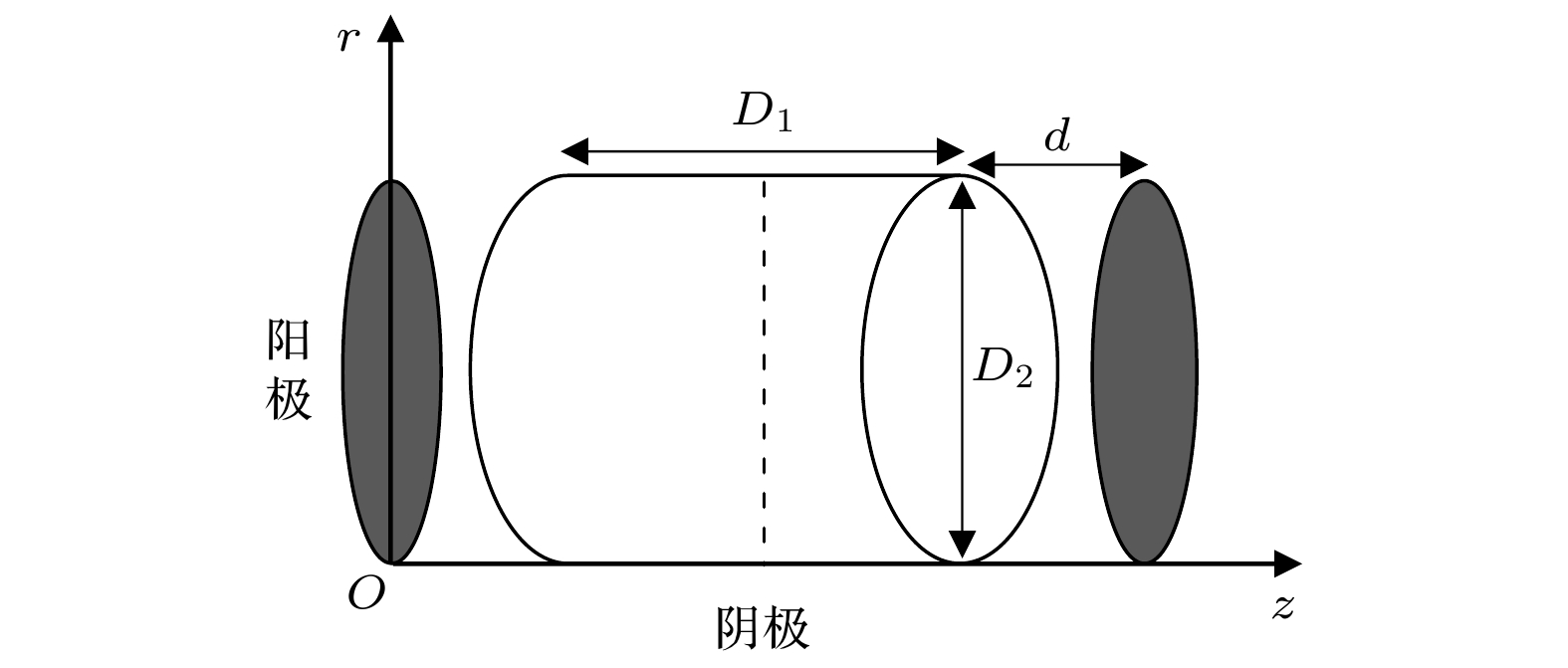
2022, 71 (2): 025201.
doi: 10.7498/aps.71.20211150
Abstract +
The characteristics, the formations and loss mechanisms of different particles of hollow cathode discharge in oxygen at 266 Pa are investigated by using the fluid model. The model contains 11 kinds of particles and 48 reactions. Under this simulation condition, the negative glow regions corresponding to the surrounding cathodes overlap. The results show that there is a strong hollow cathode effect. The density distributions of different charged and active particles are calculated. The charged particle density is located mainly in the central region of the discharge cell. Electrons and O– are the main ingredients of negative charges in the discharge system, and their density peaks are 5.0 × 1011 cm–3 and 1.6 × 1011 cm–3, respectively and ${\rm{O}}_2^+ $ is a main composition of positive charge in the discharge system with a peak density of 6.5 × 1011 cm–3. Abundant active oxygen particles exist in the discharge system, and their density is much higher than those of other charged particles. According to the densities of active particles, their magnitudes are ranked in the small-to-large order as O, O2(a1Δg), O(1D) and O3. Furthermore, the generation and consumption mechanism of electrons, O– and ${\rm{O}}_2^+ $ are calculated in detail, and the generation and consumption paths of different active oxygen particles are also given. The results show that there is a complex coupling process among these particles. Each reaction generates a certain number of particles and consumes other particles at the same time, resulting in a dynamic balance among these particles.
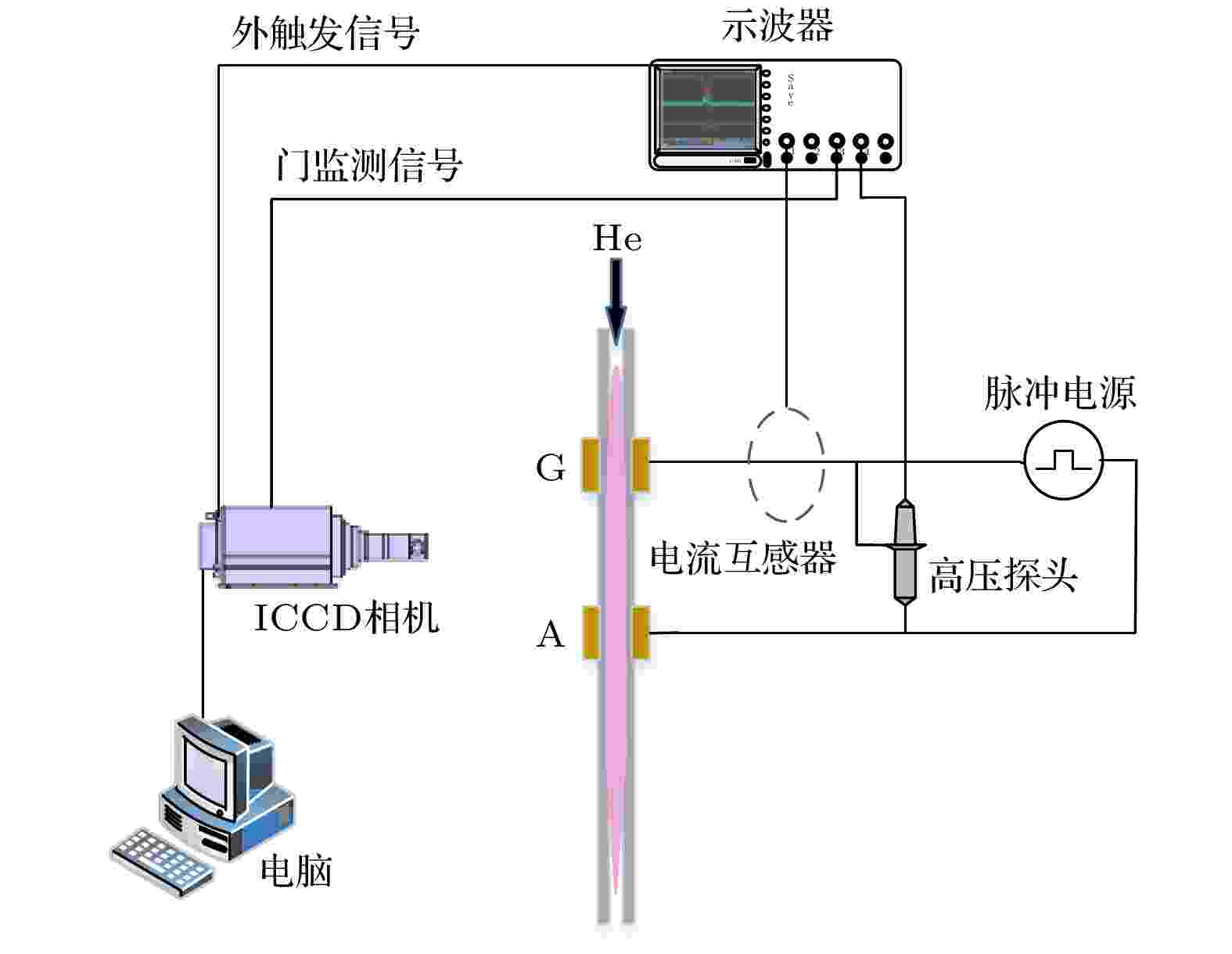
2022, 71 (2): 025202.
doi: 10.7498/aps.71.20210470
Abstract +
In this work, we employ pulse voltage to drive an atmospheric pressure plasma jet (APPJ) in Helium, and consider mainly the evolution of discharge inside tube. Specifically, the effects of rising edge on the discharge evolution are studied through the simulation and experiment. The spatiotemporal evolution of electron density, ionization source, electron temperature and excited helium atom are evaluated. Besides, the mechanism affecting the rise time is analyzed by the parameters such as discharge current, sheath thickness and surface charge density distribution. In the considered cases, the ionization wave propagates to the ground electrode and downstream of the active electrode in the dielectric tube. The plasma with faster rising edge has larger electron temperature, discharge current, electron density and electric field strength. With the change of voltage rising edge, there occur two discharge modes: hollow mode and solid mode in dielectric barrier discharge (DBD) area. When the rising edge is of nanosecond and sub microsecond, it develops into hollow mode, and changes into solid mode after the rising edge has continued to increase. Both discharge modes are essentially affected by the sheath thickness, the electric field distribution, and the surface charge density inside the tube. When the sheath thickness is less than 1.8 mm, the plasma usually propagates in hollow mode, and when the sheath thickness is equal to 1.8 mm, the radial propagation range of the plasma is limited and changes into solid propagation. In the DBD region, when the electric field is mainly axial component, the plasma propagates in the mode at the beginning of discharge; inside the ground electrode, owing to the fact that the applied electric field is deviated from the radial direction, and that the positive charge deposited on the tube wall forms a radial self-built electric field, the strong radial electric field formed by the superposition of the two fields causes the discharge to propagate in hollow mode.

EDITOR'S SUGGESTION
2022, 71 (2): 025203.
doi: 10.7498/aps.71.20211018
Abstract +
In order to achieve the self-sustaining fusion goal of inertial confinement fusion (ICF), extremely strict requirements for the quality of deuterium-tritium(D-T) ice in the target shell have been put forward. The concentricity between the inner surface of the ice and the target shell is required to be greater than 99.9%, and the root mean square (RMS) roughness of the inner surface of the ice is better than 1 μm. The high-quality ICF target is based on the high-quality D-T ice in the target shell. Single crystal is the best form of D-T ice, and seed crystal in target shell is the basic condition. In this paper, the step temperature control method of gradually reducing the heating rate is used to study the retention of seed crystals in the fill tube, and the nucleation mechanism of retention of seed crystals in the fill tube is revealed. The experimental results show that the use of the fill tube defects can keep stable and single seed crystal, and under the same supercooling, when deuterium tritium seed crystal c-axis and the fill tube are axially parallel, the growth rate is about 1–2 orders of magnitude slower than that when the c-axis is perpendicular to the axial direction of the gas filled tube. The results provide a reference for obtaining high-quality seed crystals, and a basic support for developing the D-T target in China.
CONDENSED MATTER: STRUCTURAL, MECHANICAL, AND THERMAL PROPERTIES
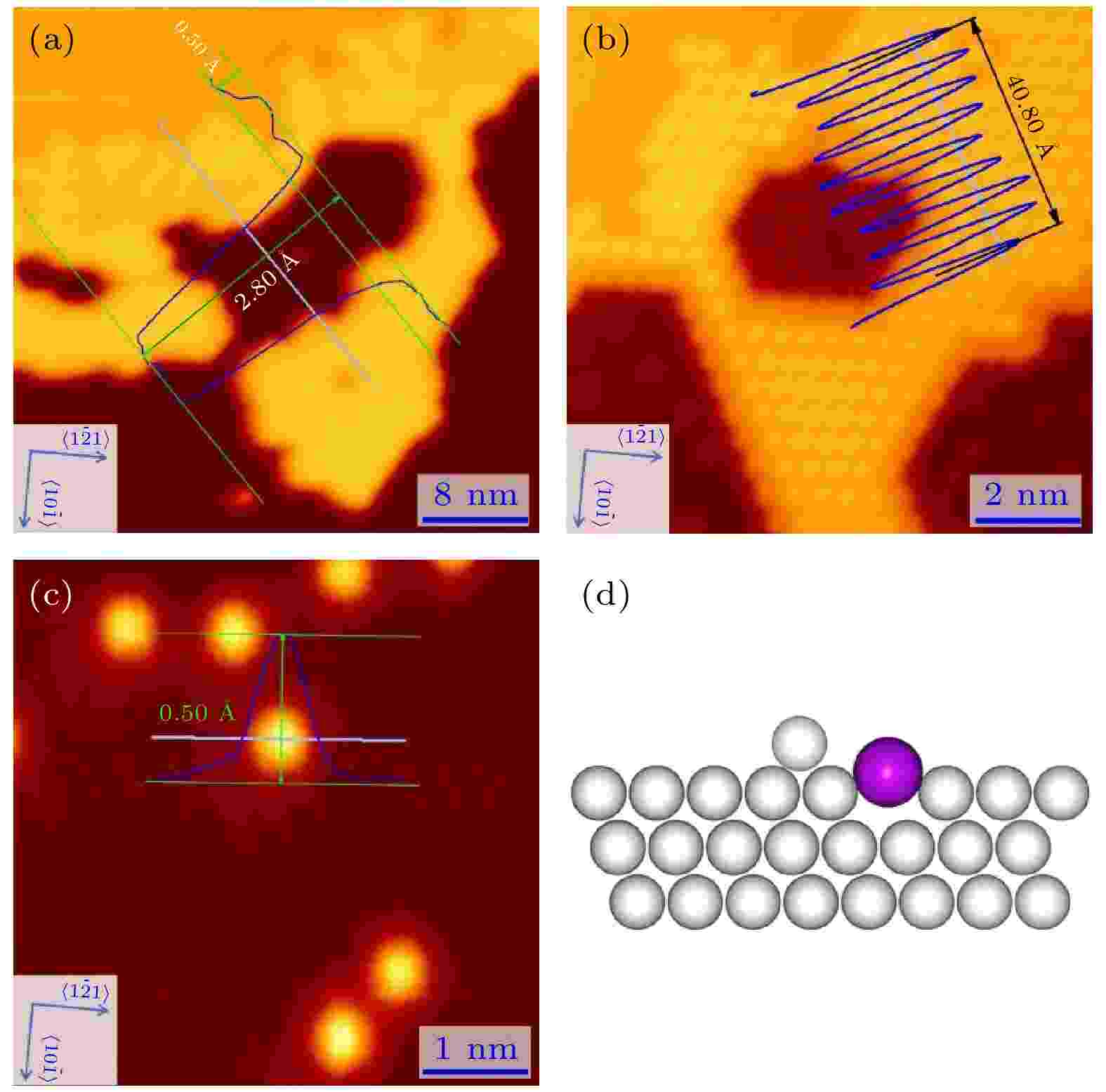
EDITOR'S SUGGESTION
2022, 71 (2): 026101.
doi: 10.7498/aps.71.20211360
Abstract +
The Rashba effect of surface alloys of semimetallic bismuth (Bi) is strongly related to its specific structural properties. The initial growth behaviors of Bi atoms on Ag(111) substrate and Au(111) substrate are systematically investigated by combining scanning tunneling microscopy (STM) and density flooding theory (DFT) in this paper. Continuous Ag2Bi alloy films are formed preferentially at the step edge on Ag(111) held at room temperature; Bi atoms replace step edge atoms with low coordination number and are randomly distributed from single atoms to the forming of long-range ordered Ag2Bi alloy phase as the coverage increases to 0.33 ML on Ag(111) held at 570 K. With the coverage increasing, Ag2Bi is converted into Bi films with a $ p\times \sqrt{3} $ structure by the dealloying process. In contrary to Ag(111), Bi growth behavior on Au(111) held at room temperature and at 570 K are consistent: Bi atoms are adsorbed preferentially on Au atom pairs with coordination 5 and are dispersed as single atoms and clusters in the densely packed region and the corners of the herringbone reconstruction when coverage level is below 0.40 ML; as the coverage level increases to 0.60 ML, the disordered Bi atoms gradually transform into the long-range ordered ($ \sqrt{37}\times \sqrt{37} $ ) phase. Moreover, the adsorption of Bi atoms leads the Au(111) surface strain to gradually release. The different growth behaviors of Bi atoms on Ag(111) substrate and Au(111) substrate suggest that the interaction between Bi atoms and the substrate plays a key role. Bi atoms are adsorbed preferentially around atoms with low surface coordination number under low coverage.
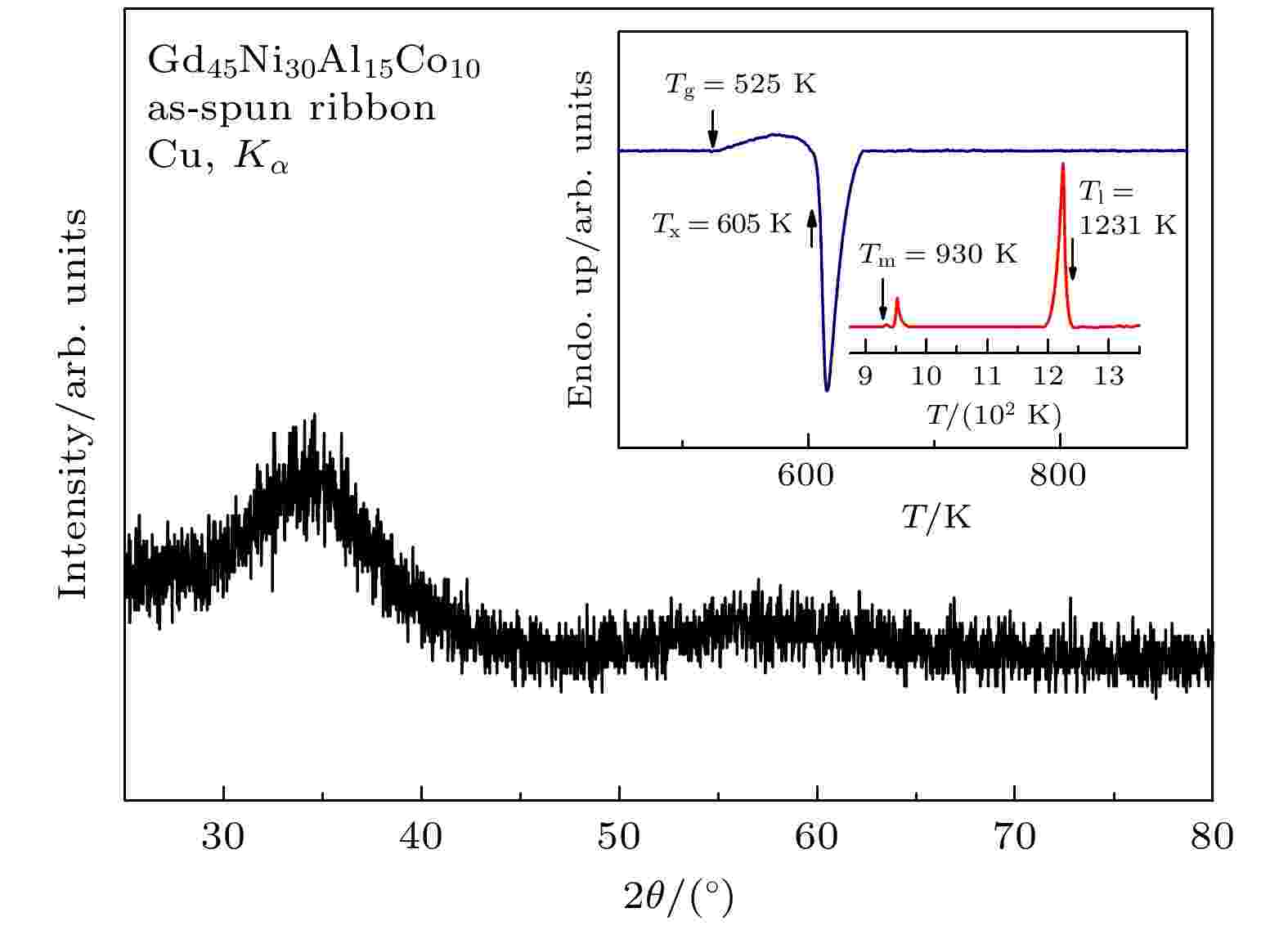
EDITOR'S SUGGESTION
2022, 71 (2): 026102.
doi: 10.7498/aps.70.20211530
Abstract +
Materials with excellent magnetocaloric properties are a key factor for the application of magnetic refrigeration technology. In this work, an amorphous ribbon of quaternary Gd45Ni30Al15Co10 alloy is designed and prepared, and the magnetocaloric properties of the alloy are systematically studied. The introduction of Co can improve the thermal stability of the amorphous structure. The Curie temperature and effective magnetic moment of Gd45Ni30Al15Co10 amorphous ribbon are 80 K and 7.21 μB, respectively. At 10 K temperature, the saturation magnetization and the coercivity of the alloy reach 173 A·m2·kg–1 and 0.8 kA·m–1, respectively, which indicates excellent soft magnetic properties. At 5 T magnetic field, the peak value of magnetic entropy change and relative cooling capacity of Gd45Ni30Al15Co10 amorphous alloy are as high as 10.2 J·kg–1·K–1 and 918 J·kg–1 respectively. The amorphous alloy has typical secondary magnetic phase transition characteristics, and the magnetic refrigeration can be realized in a wide temperature range. The Gd atomic content is less than 50% with low cost, which means that the alloy is an ideal magnetic refrigeration material.
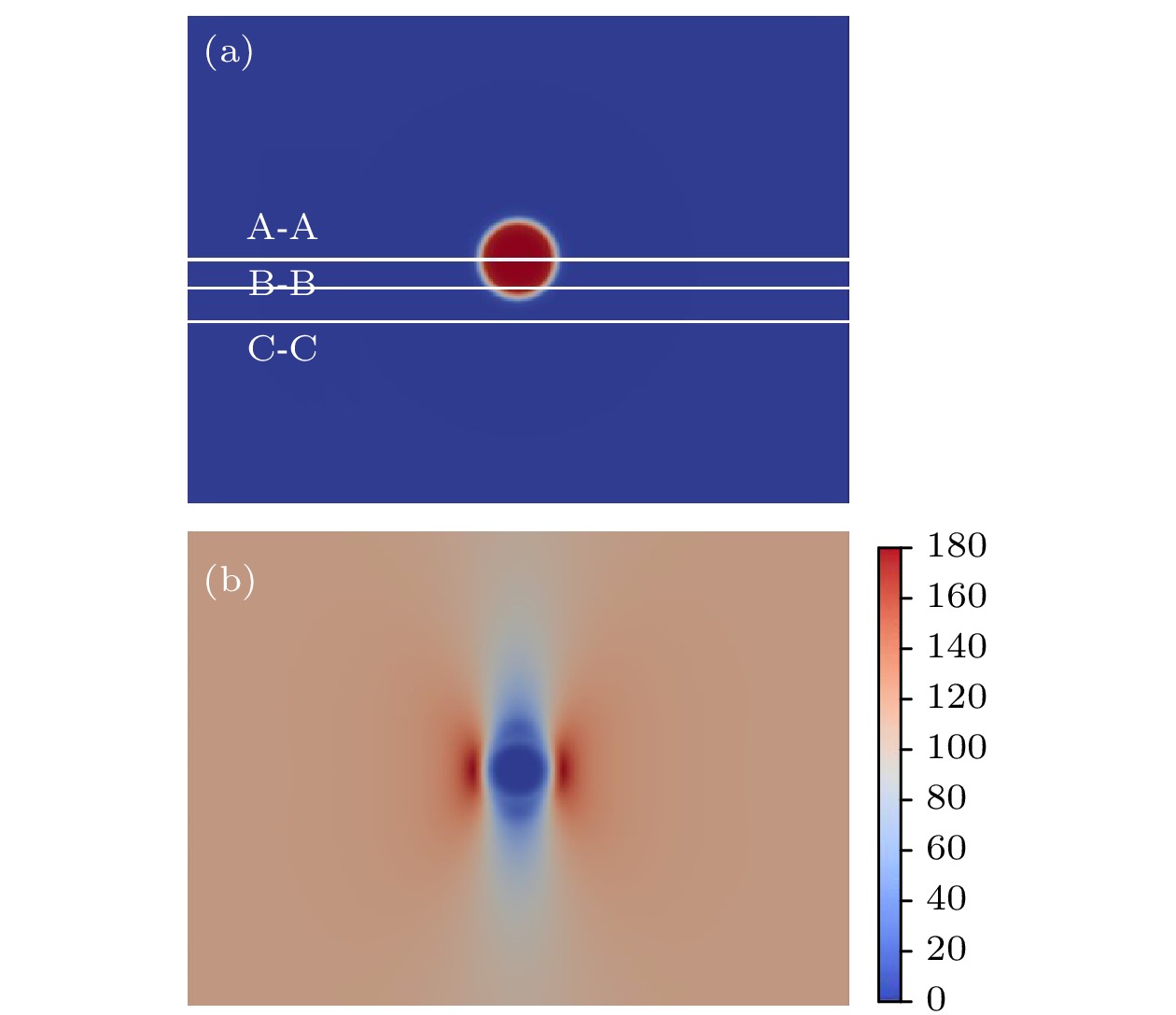
2022, 71 (2): 026103.
doi: 10.7498/aps.71.20211440
Abstract +
Owing to the migration and aggregation of point defects produced by cascade collision, a large number of cavities form easily during irradiation of the uranium dioxide (UO2) that is an important nuclear fuel. In addition, cavities are also inevitably introduced into the ceramic fuel during sintering. Moreover, the creep strain and thermal strain, caused by the extreme environment of high temperature and strong irradiation, significantly increase the applied stress of nuclear fuel. Therefore, it is crucial to investigate the microstructure evolution of the cavities in UO2 fuel under applied stress. In this work, a phase-field model of void evolution in UO2 under applied stress is established. Firstly, the elastic equilibrium equation is solved by the perturbation-iterative method, and the stress distribution around a single void under applied stress is calculated. The results show that the stress concentration is observed at the edge of the void, and the simulated stress distribution is consistent with the theoretically analytical results. Then, the evolution processes of a single void under different applied stresses are simulated by the phase-field model. The results show that the growth rate of void increases with the augment of applied stress. Finally, the effect of applied stress on grain growth and void evolution in polycrystalline are also studied. The results show that the applied stress will accelerate the void growth. With the increase of the applied stress, the effect of the applied stress on accelerating the void evolution increases.
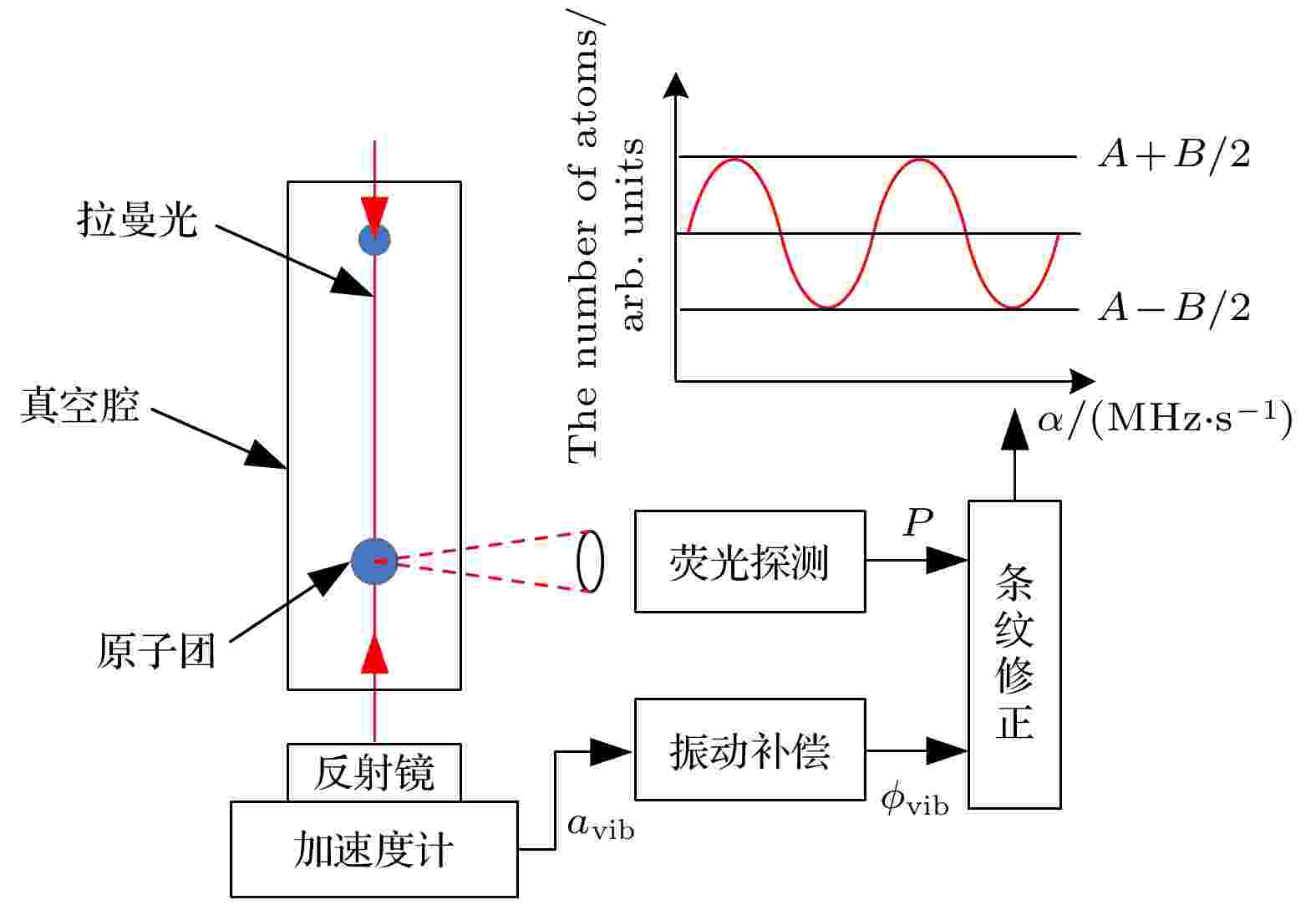
2022, 71 (2): 026701.
doi: 10.7498/aps.71.20211449
Abstract +
Dynamic gravity measurements can improve the survey efficiency of the gravity field, and can play an important role in implementing the basic geological surveys, resource exploration, and geophysical research. Based on cold atom gravimeter, inertial stabilization platform and the movable vehicle device, a system for dynamically measuring absolute gravity is built, and the dynamic measurement experiments are carried out. Firstly, the noise power spectra of the vertical vibration are measured at different moving velocities, and the influence of such a vibration on the measurement of absolute gravity is analyzed theoretically. Besides, the influence on the contrasts and offsets of the atomic interference fringes are evaluated from different moving velocities, then the effect of vibration compensation in the dynamic measurement environment is analyzed. When the maximum moving speed is 5.50 cm/s and the maximum vibration amplitude is 0.1 m/s2, the atomic interference fringes can still be rebuilt based on the technology of vibration compensation. On this basis, the atomic interference fringes are obtained at different values of T and different moving velocities, then the absolute gravity value in the dynamic measurement environment is evaluated. After the correction of the systematic system and subtraction by the initial value of absolute gravity, the final measured result is (–1.22 ± 2.42) mGal. Finally, the experiment on the static absolute gravity is conducted, and the two values are found to be not much different from each other through comparing the static measurement data with the dynamic measurement data. The experiment of dynamic absolute gravity measurement in this paper may provide the helpful reference data for the dynamic absolute gravity measurement with moving vehicles.

2022, 71 (2): 026801.
doi: 10.7498/aps.71.20210635
Abstract +
The safe operation of power equipment largely depends on the overvoltage protection level of the arrester. The ZnO varistors are widely used as the core components of the arresters in power systems because of the excellent nonlinear volt-ampere characteristics. In order to study the electrical properties of ZnO varistors under different external electric fields from the microstructure, the method of first-principles based on density functional theory (DFT) is used, and structure of ZnO/β-Bi2O3 interface containing zinc interstitial (Zni) and oxygen vacancy (Vo) defects is built. The results show that the Vo defect migrates after full relaxation. The Zni shifts to the interface under an external electric field. The interface energy increases rapidly after the electric field intensity has exceeded 0.1 V/Å, which means that the interaction force between the interfaces becomes larger, the distance between ZnO and β-Bi2O3 layers decreases, and the conductivity increases rapidly. The differential charge density, work function and Bader charge analysis method are used to calculate the barrier height at the interface, which proves that the built-in electric field is an important cause ingredient responsible for the non-linear volt-ampere characteristics of ZnO varistors. The effects of atomic orbital energy level, trap energy level and energy gap on the macroscopic conductivity of ZnO varistors are analyzed by using the method of density of states analysis. In this work are analyzed the different electrical parameters of the ZnO/β-Bi2O3 interface with aggregation defects by adjusting the intensity of the external electric field, and a new idea is provided for learning the electrical characteristics of ZnO varistors.
CONDENSED MATTER: ELECTRONIC STRUCTURE, ELECTRICAL, MAGNETIC, AND OPTICAL PROPERTIES

EDITOR'S SUGGESTION
2022, 71 (2): 027301.
doi: 10.7498/aps.71.20211370
Abstract +
In this paper, molecular dynamics simulation method is used to investigate the contacting configuration of carbon nanotubes with open ends and metal, thereby obtaining the law of radial compression deformation of carbon nanotubes. The obtained results show that after horizontally contacting the metal surface, the radial compression deformation is affected by the contact length, the diameter of the tube, the type of metal and the number of layers. Based on the first principles combining tight-binding density functional theory and non-equilibrium Green's function, the electron transport properties of carbon nanotubes with different diameters, chiralities, lamellar deformations and radial deformations are systematically studied. The obtained results show that the current of metallic single-walled carbon nanotubes presents linear change in a bias voltage range between –2 V and 2 V, and the current-voltage curve is symmetrical about the origin. The magnitude of the current is only related to the bias voltage, but not to the diameter; when the carbon nanotubes are deformed by radial compression, the current growth trend is downward and even plateau effect may appear under a larger bias voltage. The current flowing in the semiconducting single-walled carbon nanotubes decreases with the increase of radial compression deformation, and the current-voltage curve gradually transforms from semiconductor characteristics into metallic characteristics. The trend of the current-voltage curve of double-walled carbon nanotubes is consistent with that of metallic single-walled carbon nanotubes. However, the non-linear variation amplitude of the current-voltage curve of double-walled carbon nanotubes is less affected by the radial compression deformation. Owing to the increase of walls of nanotubes, the current of double-walled carbon nanotubes is twice as high as that of single-walled carbon nanotubes under the same bias voltage. The electrons can produce transitions through rapid vibration between adjacent tubes, in view of the fact that interlayer coupling characteristics of three-walled carbon nanotubes reduce the degeneracy of the energy level and larger system increases the density of states near the Fermi level, resulting in large oscillations and asymmetry about the origin of the current-voltage curve.
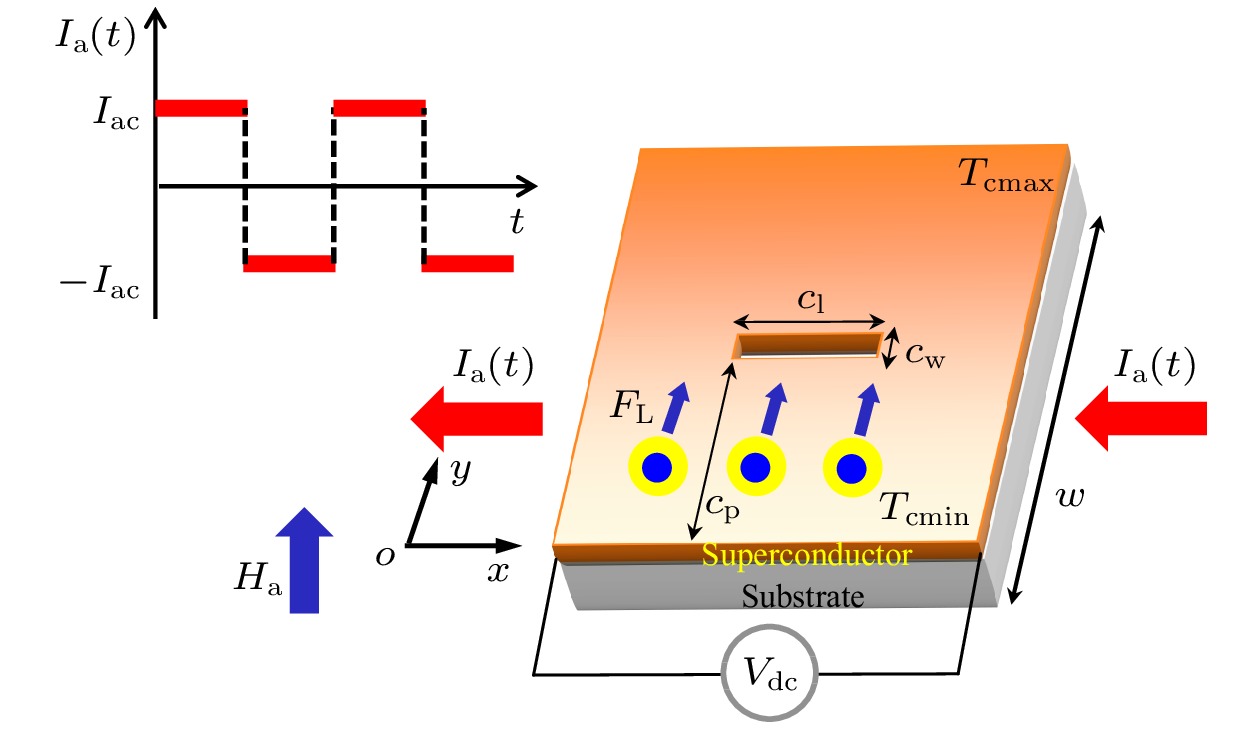
2022, 71 (2): 027401.
doi: 10.7498/aps.71.20211157
Abstract +
The ratchet effect caused by superconducting vortex motion can be widely used in flux pumps, rectifiers and superconducting switches. Ginzburg-Landau theory provides a powerful tool to investigate superconducting vortex matter. In this paper, the finite difference method is used to numerically solve the time-dependent Ginzburg-Landau equation, and the fast Fourier transform method is used to solve the coupled heat conduction equation. The vortex dynamic behavior of the superconducting thin film with a linear change of critical temperature is simulated numerically, and a new way to regulate the superconducting rectification effect is proposed. The effect of critical temperature gradient and slit location on the reversal phenomenon of rectified voltage are studied. Because of the influence of edge barrier and the defect attraction potential on vortex motion, it is beneficial to observing the reversal rectified voltage with increasing AC amplitude that the defect location is near to the side of the higher critical temperature or the gradient of the critical temperature is small.
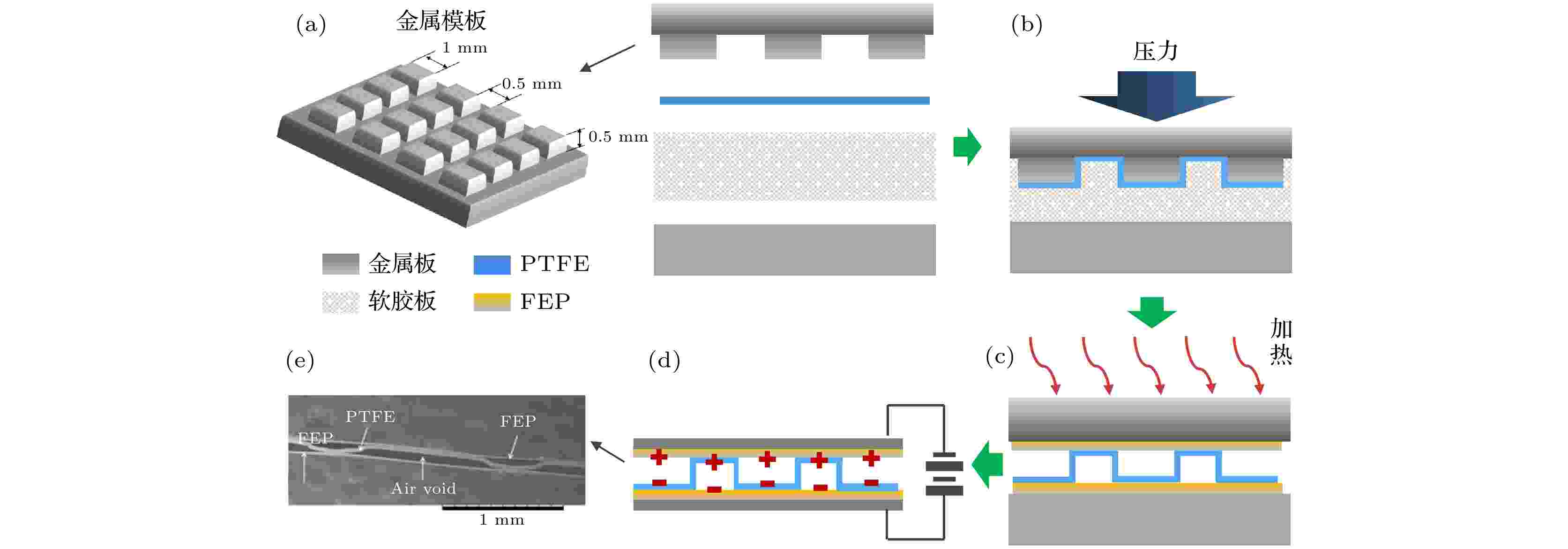
2022, 71 (2): 027701.
doi: 10.7498/aps.71.20211609
Abstract +
Piezoelectret (also known as ferroelectret) is a kind of cellular electret material with strong piezoelectric effect. Such a material exhibits flexibility, low density and small acoustic impedance. Therefore, piezoelectret is an ideal material for air-borne flexible sound transducers. Aiming at high-sensitivity and thermal-stability sound transducers, in this work, laminated fluorinated polyethylene propylene (FEP) and polytetrafluoroethylene (PTFE) piezoelectret film with a regular cellular microstructure is prepared by a procedure involving template-based cellular structure formation and polarization. The results show that the characteristic acoustic impedance of such a laminated FEP/PTFE film is 0.02 MRayl. The quasi-static piezoelectric charge coefficient d33 up to 800 pC/N is achieved in a small applied pressure range. The maximum value of sensitivity of the microphones based on laminated FEP/PTFE piezoelectrets film can reach to 6.4 mV/Pa at 1 kHz. Besides, the frequency response curve of the device is flat in the whole audio range. For an ultrasonic transmitter with a diameter of 20 mm, driven by a voltage of 600 V (Vp), the sound pressure level (SPL) generated by it increases from 80 to 90 dB (Ref. 20 µPA) as frequency increases from 40 to 80 kHz. The thermal stability of the sensitivity for the transducers made of such a laminated FEP/PTFE piezoelectret film is much superior to that of polypropylene (PP) piezoelectret based device. The sensitivity of the present device remains 26% of the initial value after being annealed at 125 ℃ for 211 h. The improvement of thermal stability is attributed to the excellent space charge storage stability of FEP and PTFE.
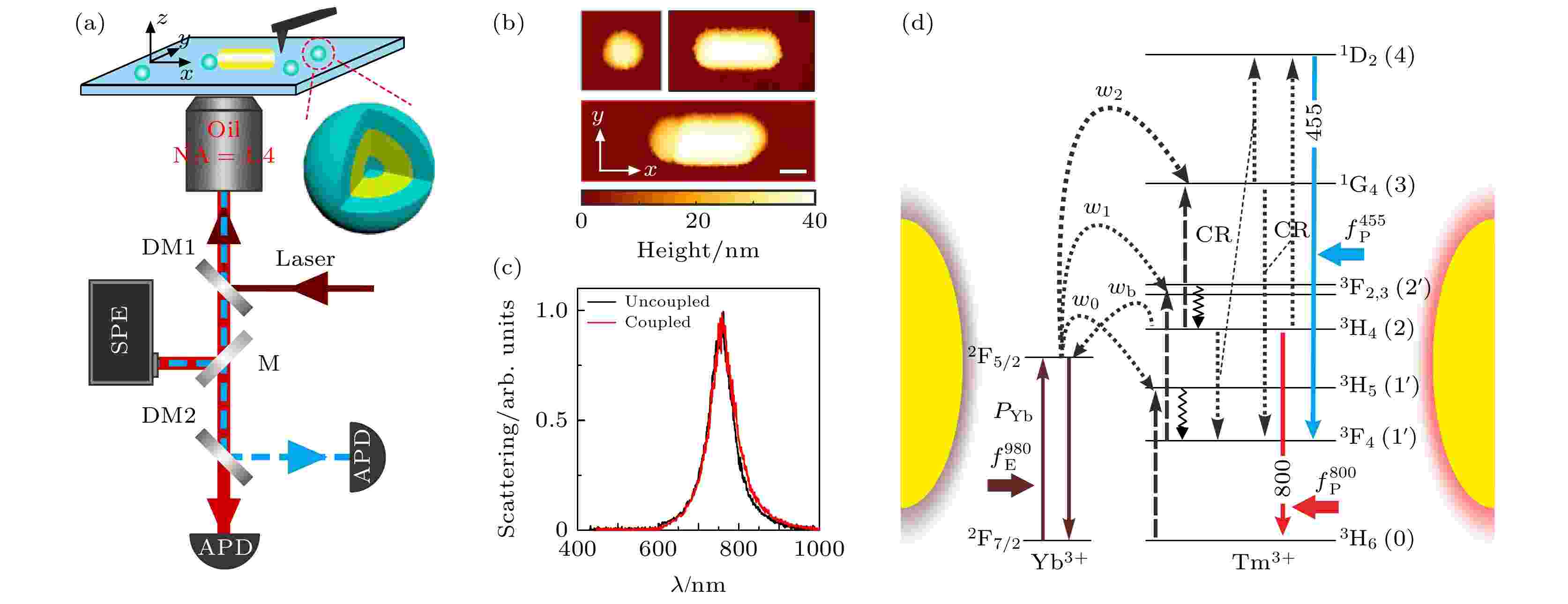
EDITOR'S SUGGESTION
2022, 71 (2): 027801.
doi: 10.7498/aps.71.20211438
Abstract +
Plasmonic nanocavities can effectively modulate the upconversion luminescence properties of lanthanide doped upconversion nanocrystals (UCNCs), which not only enhances the luminescence intensity, but also modifies the luminescence spectrum. However, currently reported studies of upconversion luminescence spectrum modulation by using nanocavities are mainly based on ensemble experiments. Compared with ensemble experiments, single-particle experiments facilitate the comparative studies for the same upconversion nanocrystal and therefore the influence of inhomogeneity in ensemble samples can be avoided. Here in this work, we couple a single particle of Yb3+/Tm3+ co-doped nanocrystal with a plasmonic nanocavity composed of a single gold nanorod by using the in-situ nano-manipulation technique based on an atomic force microscope. Experimentally, we compare the upconversion luminescence spectra, upconversion luminescence lifetimes and excitation-power dependent upconversion luminescence intensities of the same single nanocrystal before and after coupling with the single gold nanorod. The experimental measurements are consistent with the theoretical calculations from rate equations combined with electromagnetic simulations. The results indicate that the plasmaonic nanocavity modulated nanocrystal upconversion luminescence spectrum is the combined result of three effects: the excitation field enhancement effect, the Purcell effect and the change of radiation efficiency.
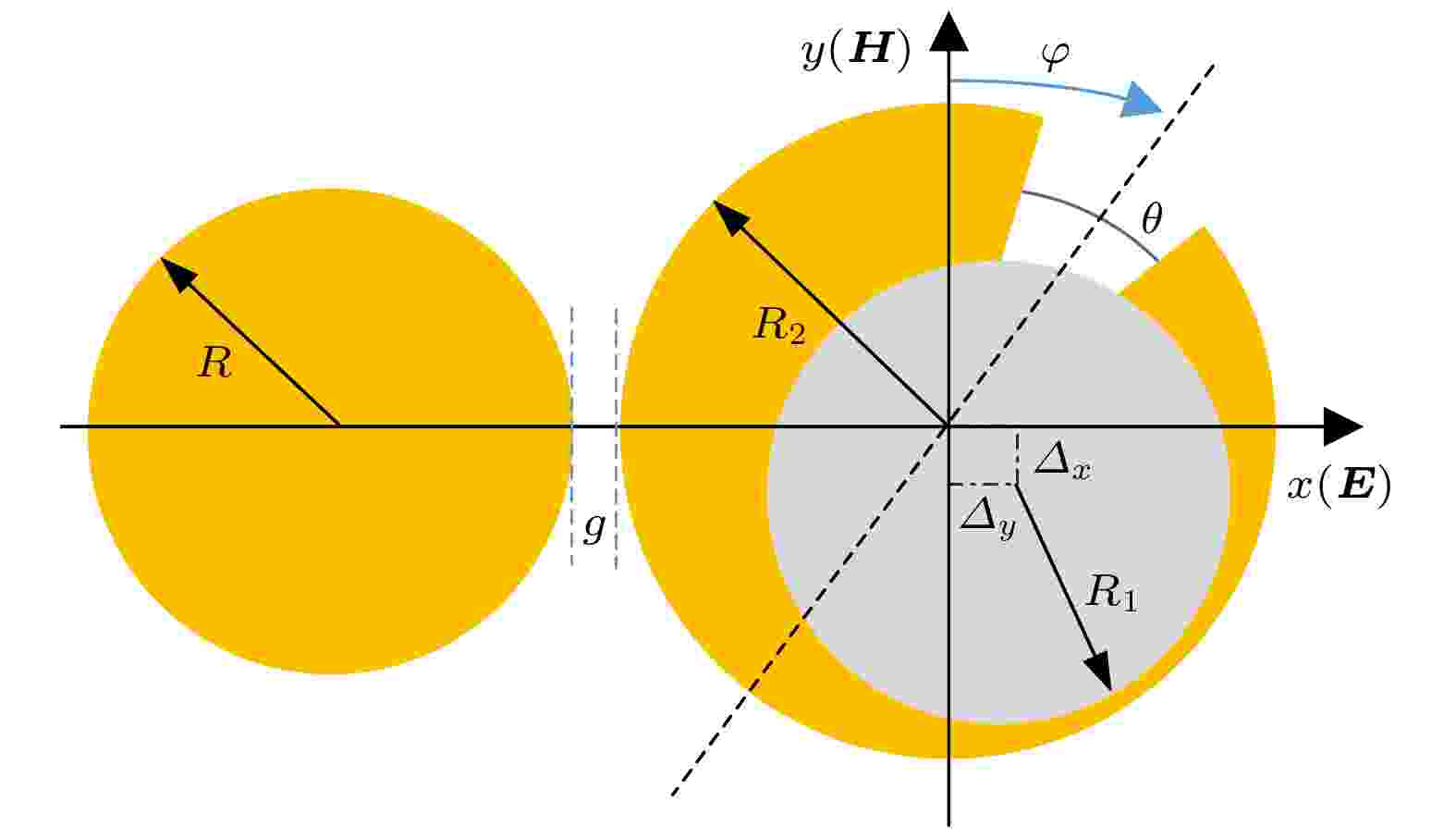
2022, 71 (2): 027802.
doi: 10.7498/aps.71.20210855
Abstract +
A plasmonic dimer composed of a gold split ring and a gold disk is proposed. The scattering spectra and electromagnetic field distributions on the surface of the dimer are calculated by the finite difference time domain method, and the effects of split gap orientation and structural symmetry breaking of the ring on Fano resonance characteristics are theoretically investigated in detail. The results show the multiple Fano resonances that can be formed due to the destructive interference between the electric dipole mode of the disk and multiple multipolar modes of the split ring, and the red shift when the symmetry breaking of the split ring is broken. When the split gap of the ring is parallel to the interparticle axis of the dimer, multiple Fano resonances based on the odd-order mode and the even-order mode of the split ring can be generated, and more even-order Fano resonances can be formed due to the further symmetry breaking of the split ring. In addition, a more refined scattering spectrum can be obtained as the ring internal surface moves far away from the disk along the interparticle axis. On the other hand, Fano resonances based on the lower order multipolar modes of the ring can be increased as they move away from the split gap. When the split gap of the ring is perpendicular to the interparticle axis of the dimer, only the even-order Fano resonances can be excited, and these resonances increase with the ring internal surface going away from the disk no matter whether the split gap of the ring faces the disk or not. As the structural symmetry of the dimer is further broken due to the ring internal surface moving along the split gap direction, the odd-order Fano resonance can be successfully produced in the dimer with the split gap coming back to the disk, at the same time, the even-order Fano resonances are gradually weaken perhaps due to the complicated competitive behaviors of spectral overlapping between the dipole mode of the disk and multipolar mode of the ring in energy. However, there is no odd-order Fano resonance appearing in the dimer with the split gap facing the disk except for a slightly increased even-order Fano resonance, as the structural symmetry of the dimer is further broken. These results are expected to be useful in designing multiple Fano controllable split ring disk dimers and also developing the application of multiwavelength micro-nano photonics.
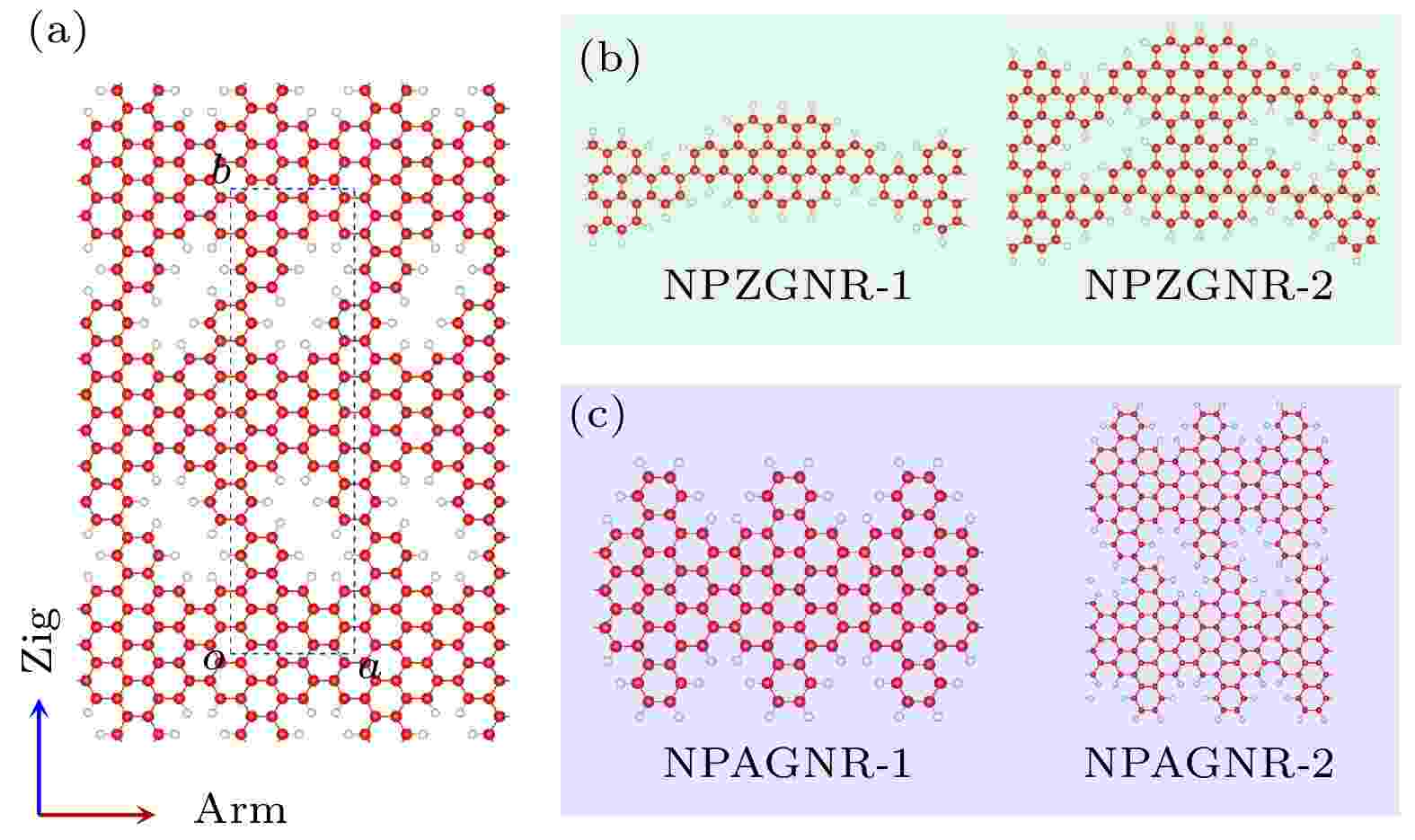
EDITOR'S SUGGESTION
2022, 71 (2): 027803.
doi: 10.7498/aps.71.20211477
Abstract +
The thermal transport properties of porous graphene nanoribbons are studied by the non-equilibrium Green's function method. The results show that owing to the existence of nano-pores, the thermal conductance of porous graphene nanoribbons is much lower than that of graphene nanoribbons. At room temperature, the thermal conductance of zigzag porous graphene nanoribbons is only 12% of that of zigzag graphene nanoribbons of the same size. This is due to the phonon localization caused by the nano-pores in the porous graphene nanoribbons. In addition, the thermal conductance of porous graphene nanoribbons has remarkable anisotropy. With the same size, the thermal conductance of armchair porous graphene nanoribbons is about twice higher than that of zigzag porous graphene nanoribbons. This is because the phonon locality in the zigzag direction is stronger than that in the armchair direction, and even part of the frequency phonons are completely localized.
INTERDISCIPLINARY PHYSICS AND RELATED AREAS OF SCIENCE AND TECHNOLOGY
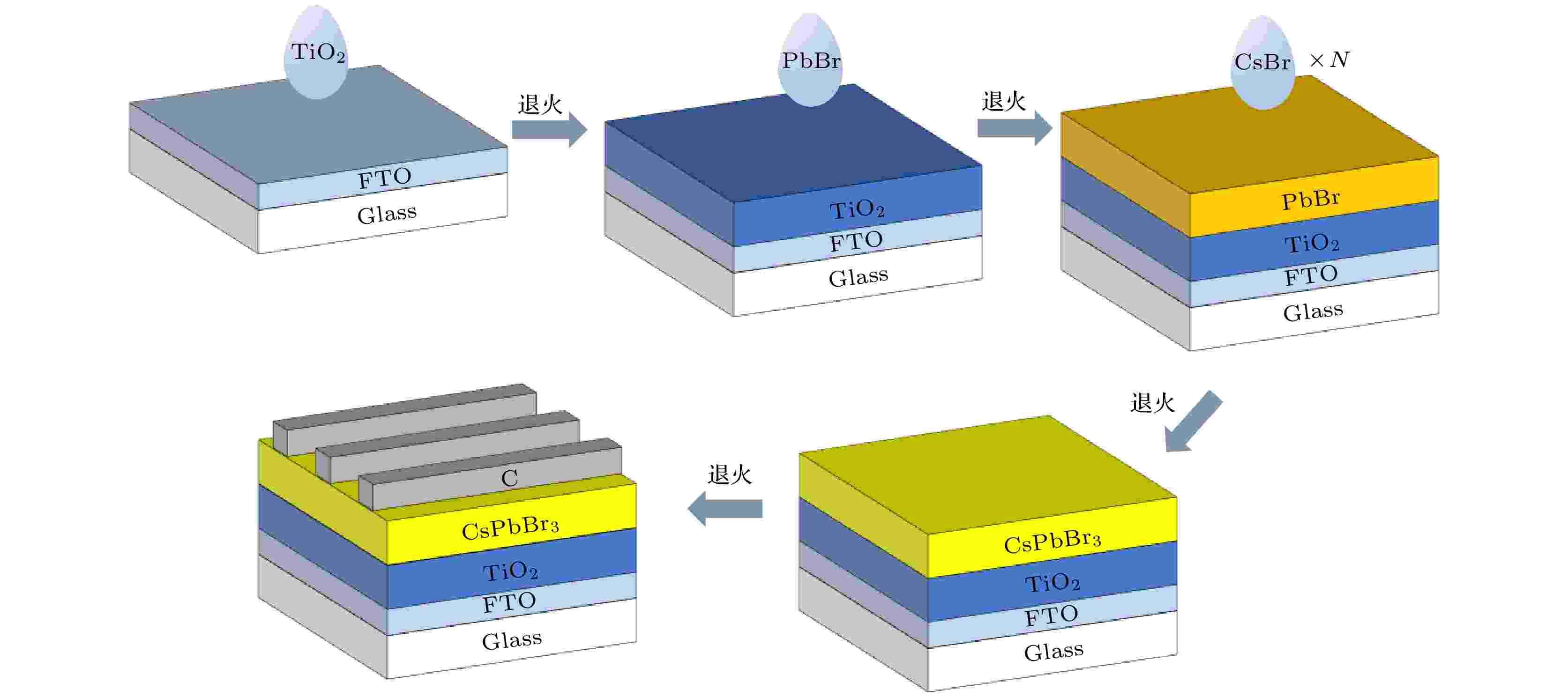
COVER ARTICLE
2022, 71 (2): 028101.
doi: 10.7498/aps.71.20211344
Abstract +

2022, 71 (2): 028102.
doi: 10.7498/aps.71.20210835
Abstract +
In order to improve the corrosion resistance and wear properties of the micro arc oxidatin (MAO) coatings on Ti-6Al-4V alloy in the marine environment, TaC-doped MAO coatings are prepared by adding different concentrations of TaC microparticles with a particle size of about 1 μm into the silicate-based electrolyte. The morphology, elemental distribution and composition of the coatings are characterized and analyzed by SEM, EDS and XPS. The thickness, roughness, hardness, wear resistance and corrosion resistance for each of the three MAO coatings are evaluated and their corresponding values of these coatings are compared with each other. The results show that by adding TaC microparticles into the base electrolyte, TaC and Ta2O5 are present in the MAO coatings on titanium alloy. Compared with the MAO coating without TaC, the surface morphology of the coating with TaC is dense and the hardness is increased by about 83.2%. The friction coefficient of the coating in the simulated seawater decreases from 0.2 to 0.148, changing from serious abrasive wear to slight adhesive wear. The corrosion current density of this coating decreases by two orders of magnitude. Furthermore, by constructing the wear and corrosion failure model of the MAO coatings in the simulated seawater, the internal mechanism of doping TaC microparticles into the MAO coating to improve its corrosion resistance and wear resistance is revealed.
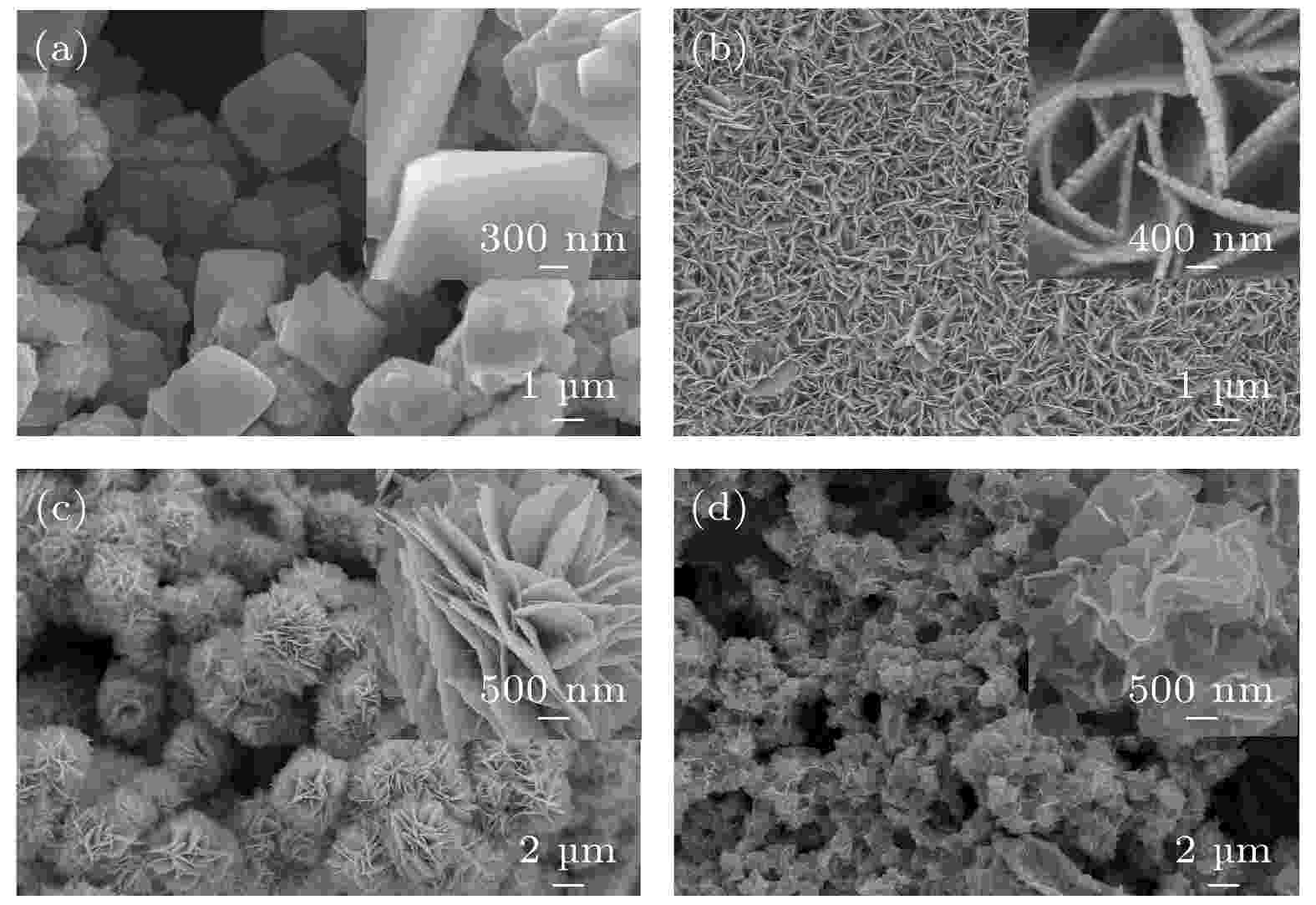
2022, 71 (2): 028201.
doi: 10.7498/aps.71.20211555
Abstract +
In this work, WO3 crystal structure films are deposited on conductive glass substrates by seed layer assisted hydrothermal reaction method. Through controlling the concentration of hydrochloric acid, oxalic acid, and the hydrothermal postprocessing temperature, the micro-peony, micro urchin-like, and porous petal-like WO3 crystal structures are obtained respectively. Scanning electron microscopy (SEM), X-ray diffraction (XRD), transmission electron microscopy (TEM) and electrochemical characterization are used to study the formation mechanism of different structures and their effects on the electrochromic properties of WO3 films. The Cl– in HCl has a strong promoting role towards the c axis in WO3 crystal growth and oxalic acid has a promoting effect towards an a axis. In terms of color efficiency, the CE value of micro-urchin is 42.37 cm2/C, far greater than those of two other WO3 structures, 15.21 cm2/C and 12.71 cm2/C. Owing to the cold-water quenching treatment, the CE value of WO3 micro-peony with porous surface structure is 56.95 cm2/C, quadruple CE value of the smooth surface structure, slightly better than that of the micro-urchin structure.

EDITOR'S SUGGESTION
2022, 71 (2): 028501.
doi: 10.7498/aps.71.20210871
Abstract +
Terahertz pulses accelerating and scanning electron beam can break through the limitation of accelerating electric field between cathodes and grids in traditional streak tubes, thus reducing the time dispersion and enhancing the temporal resolution of time-scanning detectors. Based on this new technology, in this paper an ultra-small structured time-resolved detector with no focusing pole is designed. The terahertz pulse coupling/enhancing device suitable for acceleration zone and scanning zone is designed and optimized. The enhanced coefficient of the terahertz pulse electric field in the device reaches 9.39. In the paper, the relationship between time dispersion in acceleration zone and the moment of electrons emission is analyzed theoretically. We also analyze the influence of space charge effect on time dispersion. The electronic trajectory tracking is used to calculate and analyze the time dispersion of this detector, and finally the time resolution is better than 50fs.
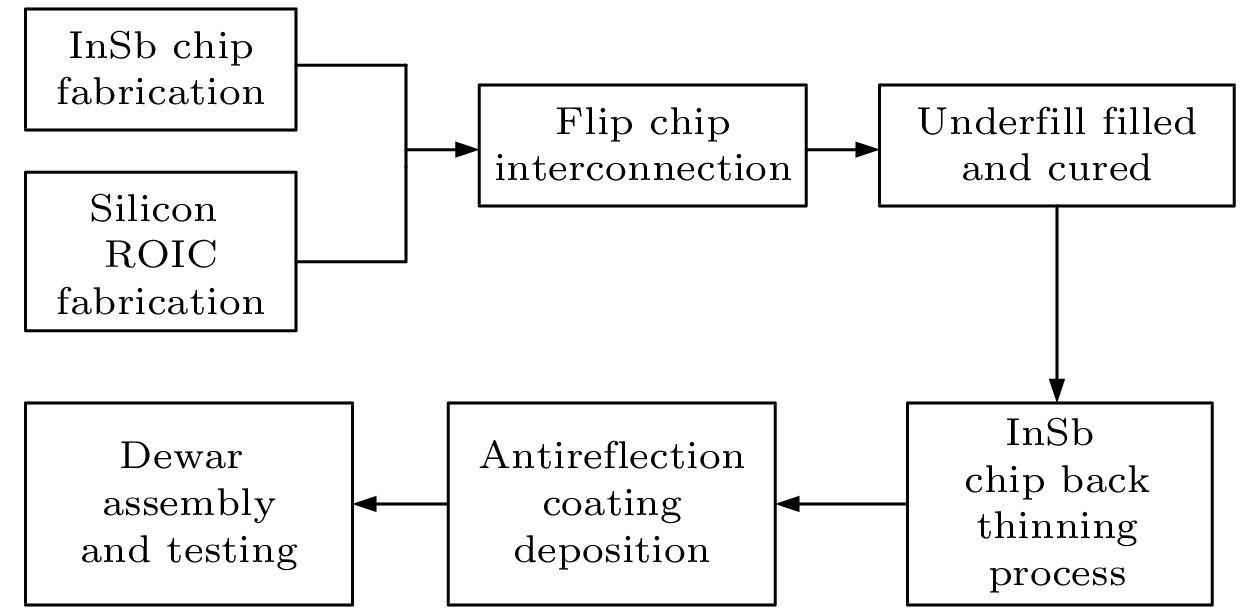
2022, 71 (2): 028502.
doi: 10.7498/aps.71.20211535
Abstract +
Local cleavage of indium antimonide (InSb) chip always occurs in the manufacture of the InSb infrared focal plane detectors (IRFPAs), and this specific fracture phenomenon restricts the improvement of the yield of the InSb IRFPAs. After analysis, we think that the cleavage of InSb chip in the edge region of the InSb IRFPAs is related to the splashed gold bump existing in this region, and this failure phenomenon dominates in the low-cyclic liquid nitrogen shocking tests. In order to clarify the influence of the splashed gold bump on the cleavage of the InSb chip, we establish a structural model of the InSb IRFPAs containing the splashed gold bump, and analyze the influence of the splashed gold bump on the thermal stress distribution in the InSb chip. Besides, we preset the initial cracks with different lengths at the stress concentration sites to describe the dislocations in InSb wafers. Using the energy release rate as criterion, we obtain the relationship between the cleavage of the InSb chip and the dislocation line length in the presence of splashed gold bump. The main conclusions are drawn as follows. 1) The influence of the splashed gold bump on the cleavage of the InSb chip is localized, and two stress concentration sites are formed in the outermost part of the contact region between the splashed gold bump and the InSb chip. 2) The energy release rate surrounding the preset crack increases promptly with the preset crack length increasing. 3) Cleavage of the InSb chip caused by the splashed gold bump belongs to the type I fracture failure mode. In the cyclic liquid nitrogen shocking tests, the dislocation line gradually punches through the InSb chip under the driving of the concentrating stress, and forms the macro cleavage of the InSb chip.
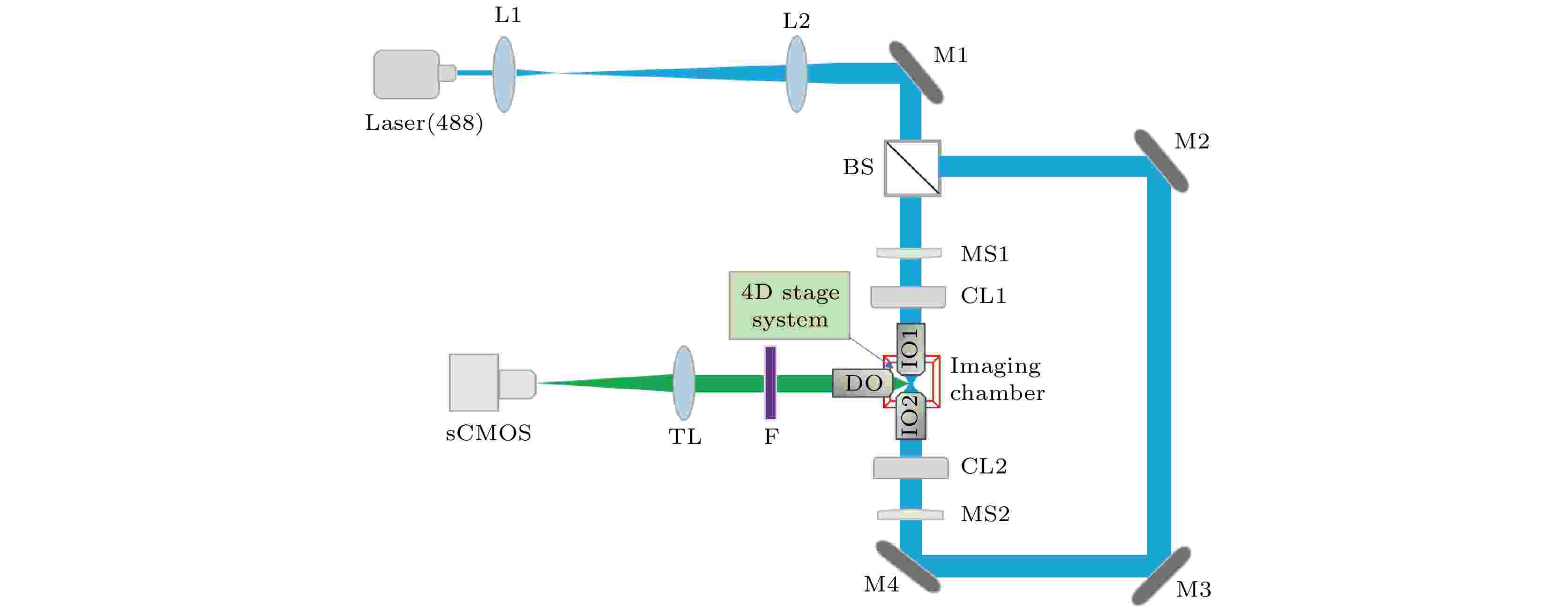
2022, 71 (2): 028701.
doi: 10.7498/aps.71.20211358
Abstract +
In light-sheet fluorescence microscopy (LSFM) a thin light sheet is used to excite the specimen from the side and imaging is performed in the direction perpendicular to the light-sheet. It has the advantages of fast imaging speed, high optical sectioning capability and low photobleaching and phototoxicity to samples. Therefore, it is suitable for high-quality, long-term three-dimensional dynamic observation of large living biological samples. However, the traditional Gaussian light sheet illumination microscopy technology has the problems of small imaging field of view and low spatial resolution. Based on the existing dual-sided illumination LSFM, a large field of view and high resolution LSFM combined with virtual single-pixel imaging deconvolution is presented in this paper, which improves the field of view and resolution of LSFM simultaneously. The relevant microscope is designed and built, and three-dimensional optical sectioning imaging experiments on fluorescent beads and transgenic zebrafish standard samples are carried out. The experimental results prove the three-dimensional high resolution imaging capability of the microscope, which is of great significance in developing the large field of view and high resolution LSFM.
GEOPHYSICS, ASTRONOMY, AND ASTROPHYSICS

2022, 71 (2): 029601.
doi: 10.7498/aps.71.20211305
Abstract +
It is an universal phenomenon that the dislocations are produced in metal plastic deformation, which will has a potential value in fundamental research field for metal strengthening and toughening if its evolution characteristics and laws are investigated. Therefore, this behavior of movable dislocation for metal Al is studied by atomic simulation, and the microscopic mechanism of metal strengthening and toughening are also revealed through studying the interaction between movable dislocation induced by nano-indentation and twin boundary. Furthermore, the movable dislocation features, and dislocation density, and hardness, and adhesive effect are analyzed, and the comparison between the single boundary height and the multilayer twin boundary height is conducted. It is found that the plastic deformation of aluminum mental can be dominant by coordinating the amorphous generation and hexagonal close-packed structure under high speed deformation. In the nano-indentation process, the twin boundary has two obvious effects on movable dislocation of moving changes: one is to hinder the dislocation from migrating, the other is to induce dislocation to produce a cell, which result in the dislocation entanglement and generation of cross slip, it is also the main reason why the metal has excellent mechanical properties of strengthening and toughening features. These results demonstrate that the local non-contact region on the surface of Al substrate can induce atomic mismatch spots to appear during loading, and when the distance between the twin boundary and the upper surface of the substrate decreases, the effects of dislocation winding and dislocation slip become more obvious, and the anti-adhesion effect also decreases. In addition, the twin boundary is treated as the propagation of plastic ring source in the dislocation emission process when substrate is continuously loaded. These results provide an important theoretical source for improving metal strengthening and toughening effect.








